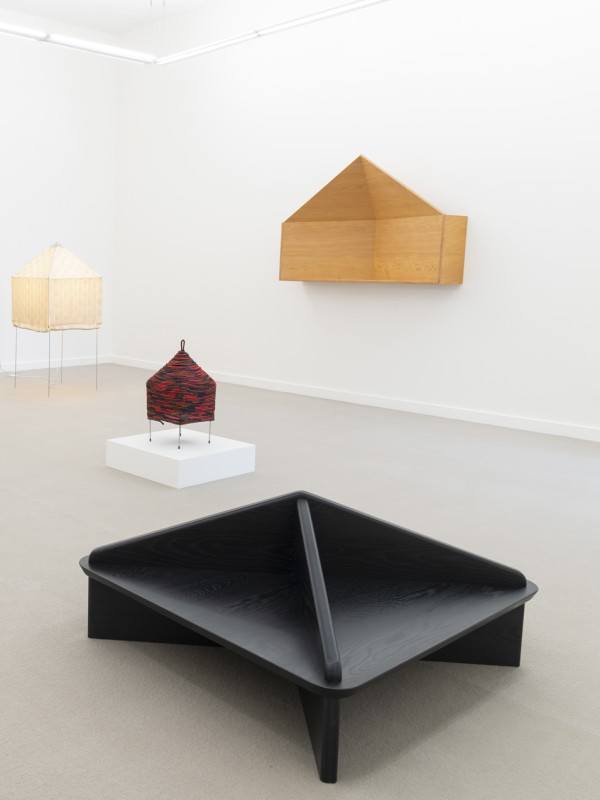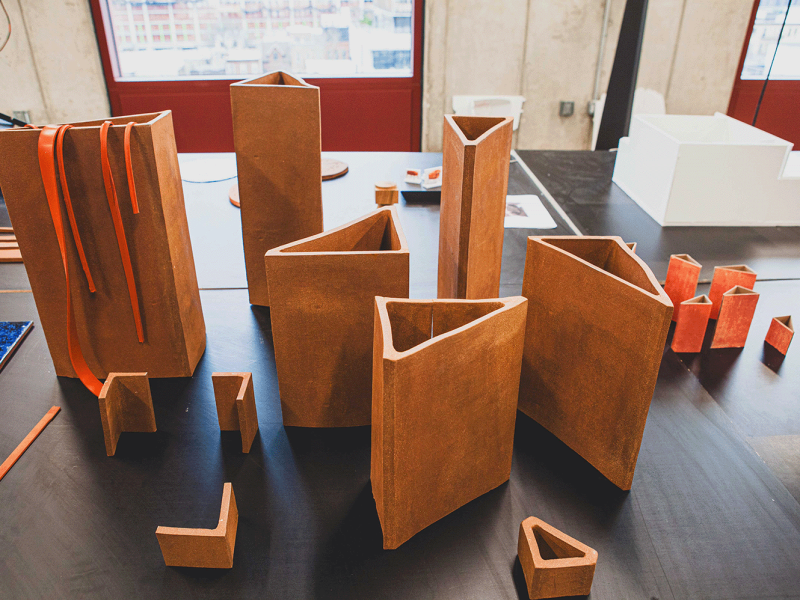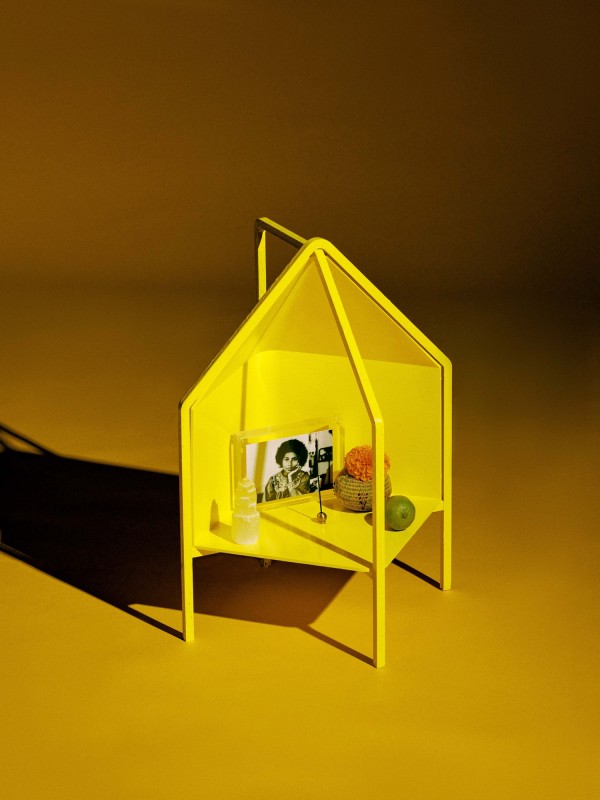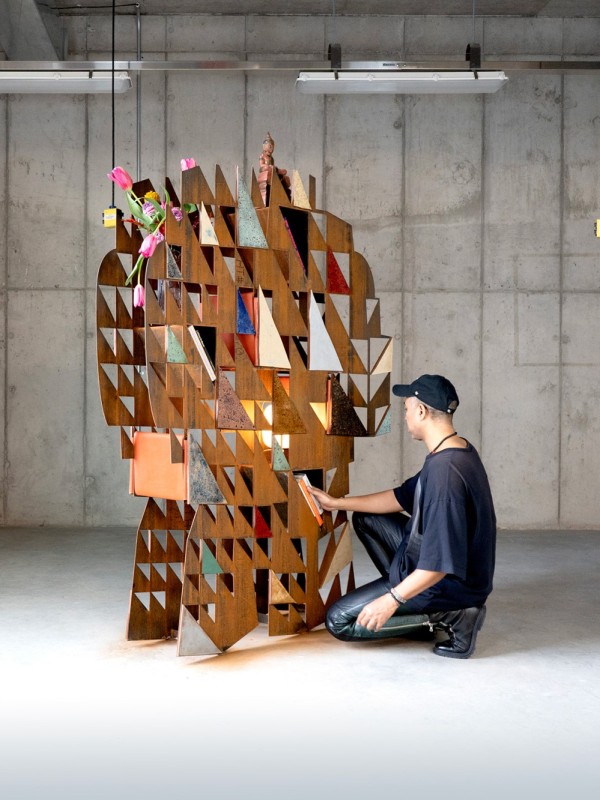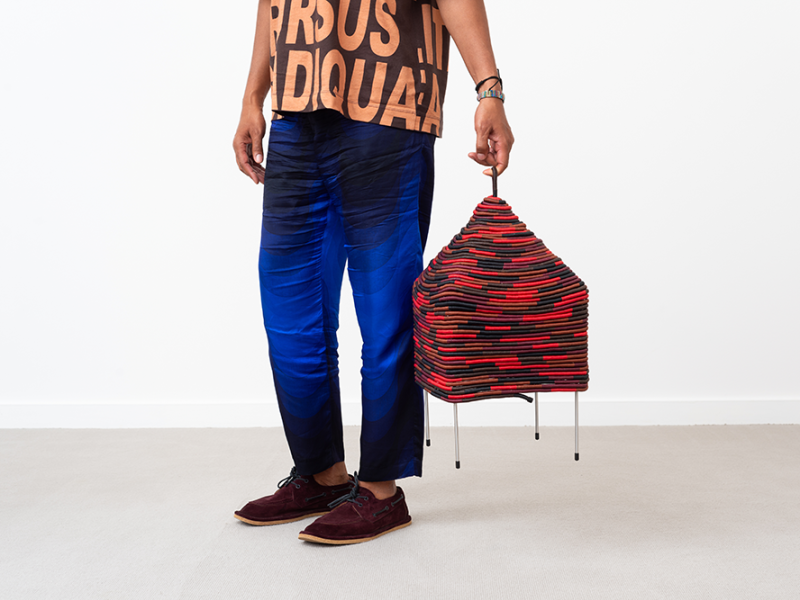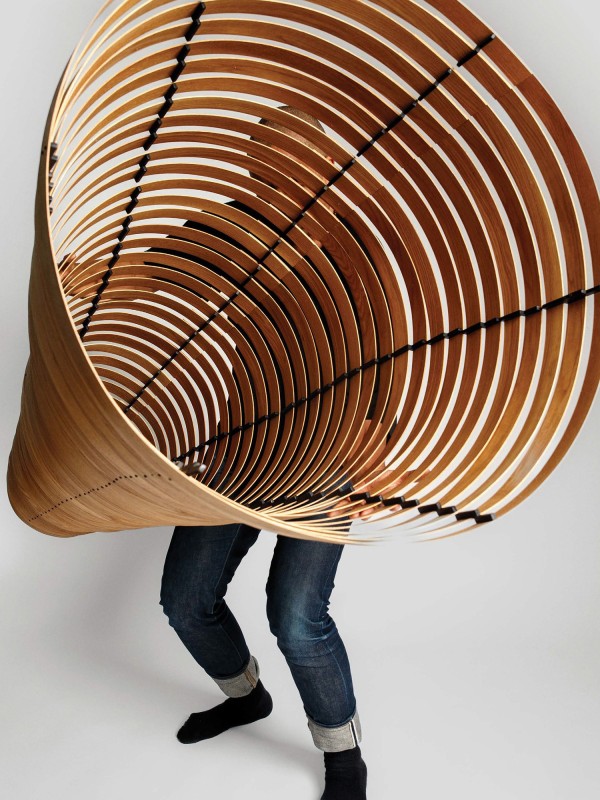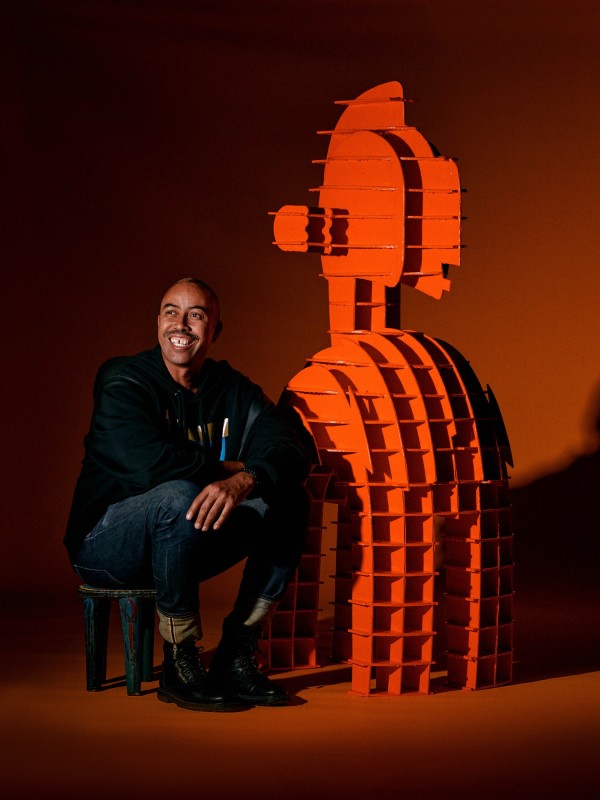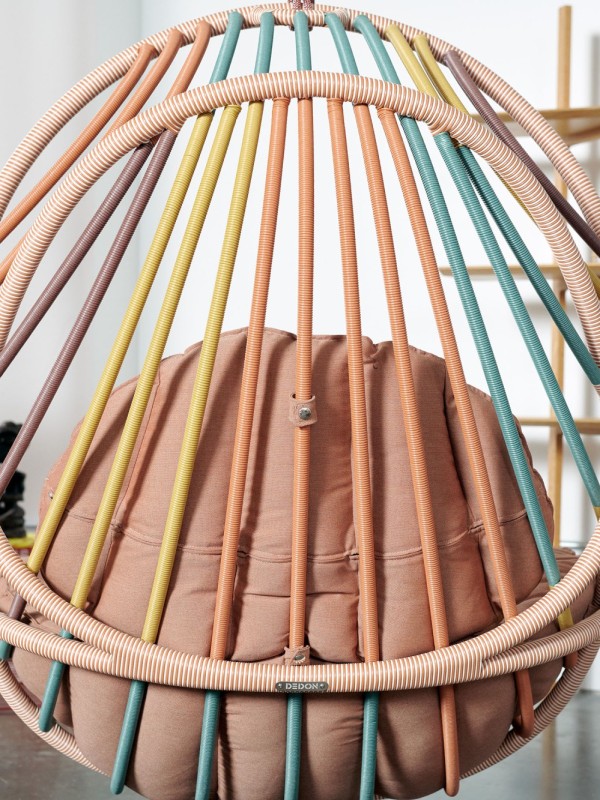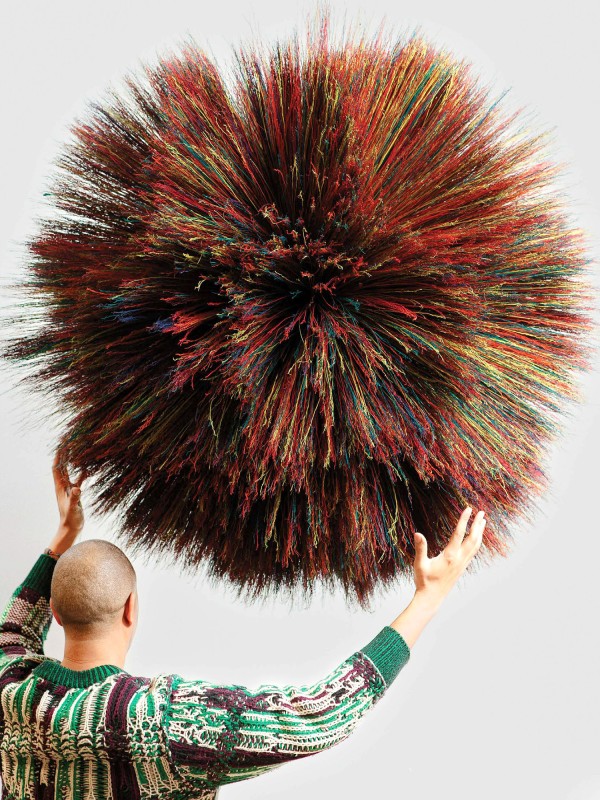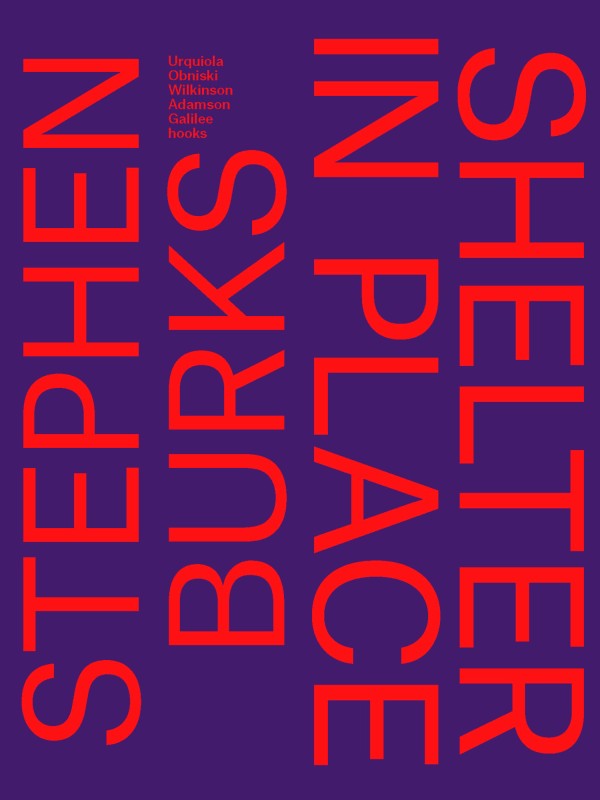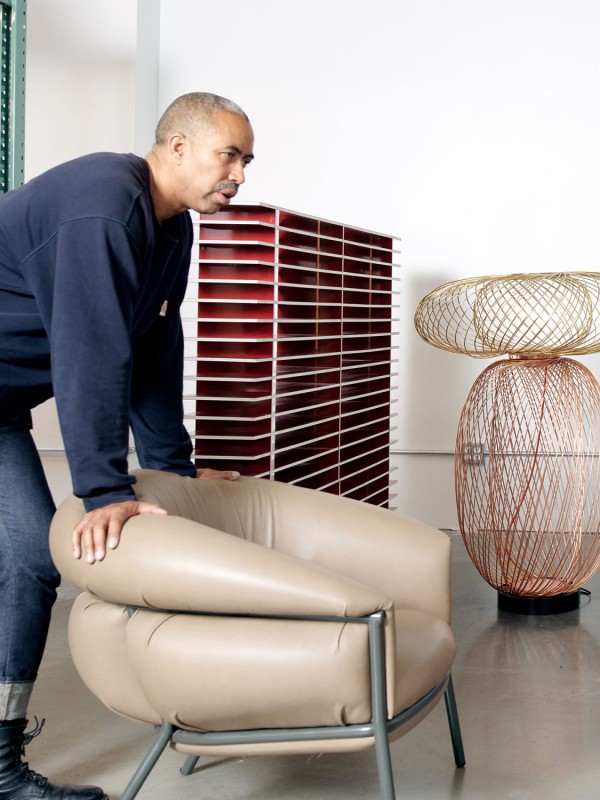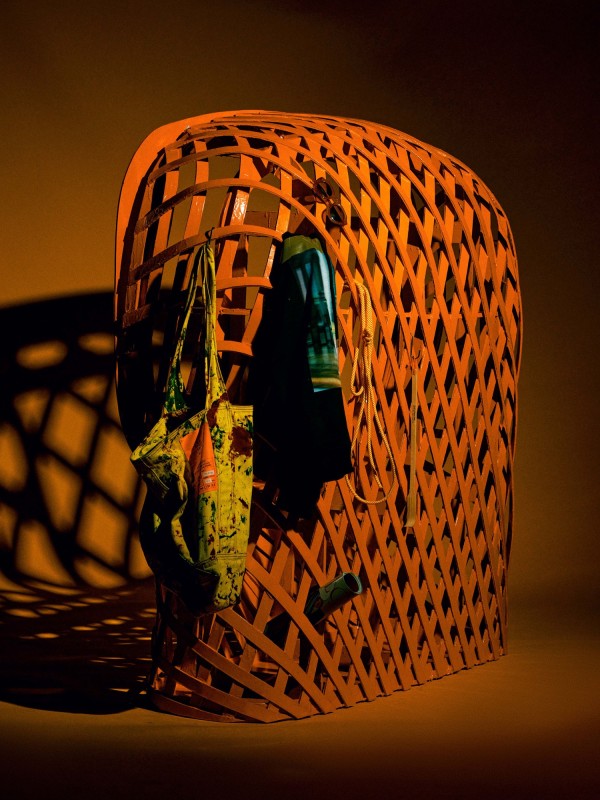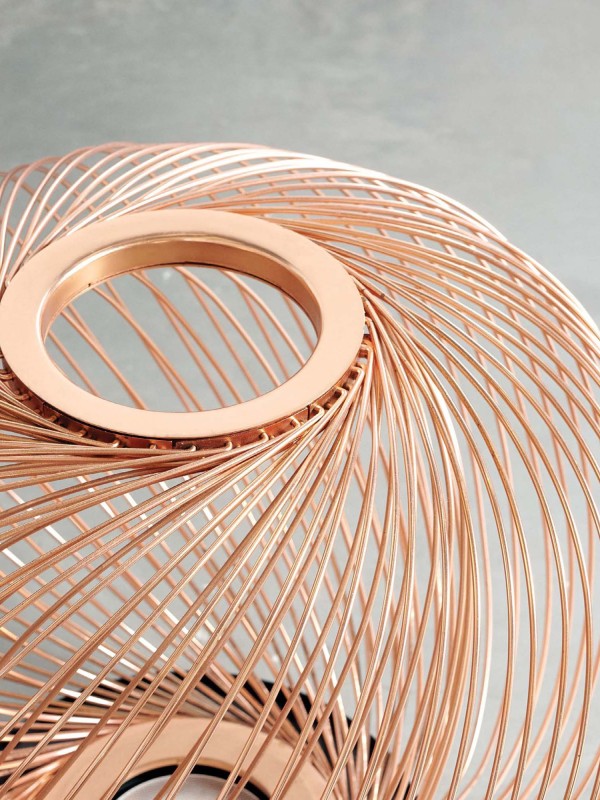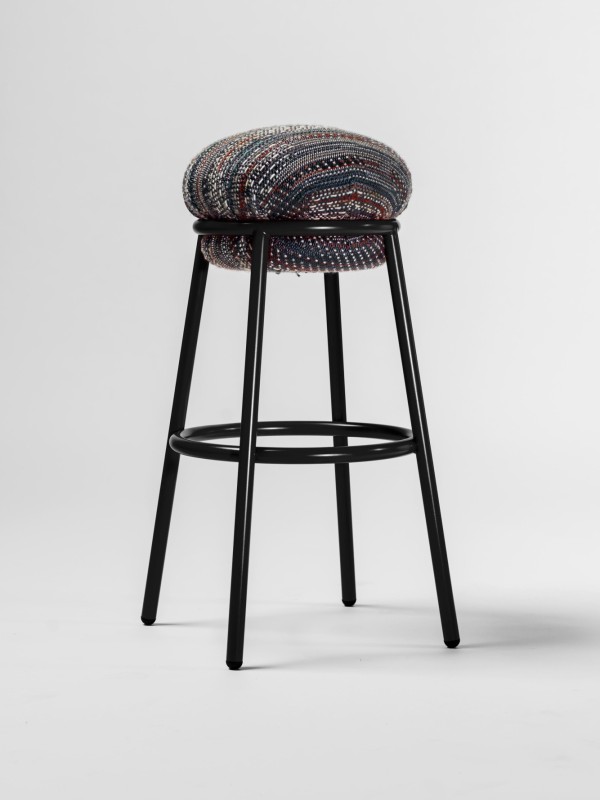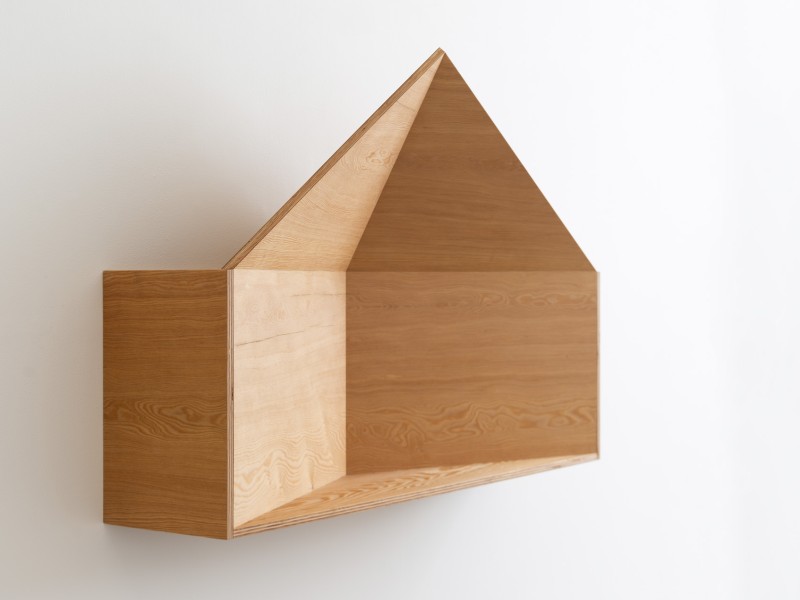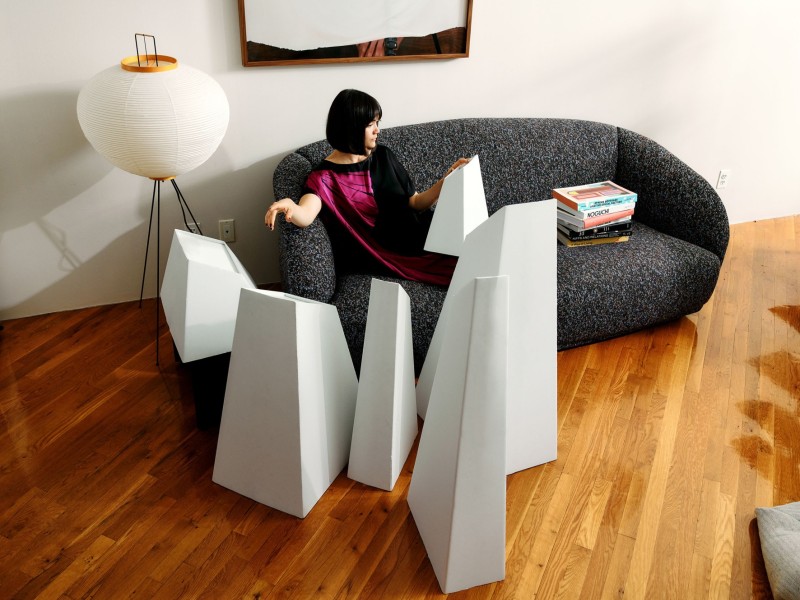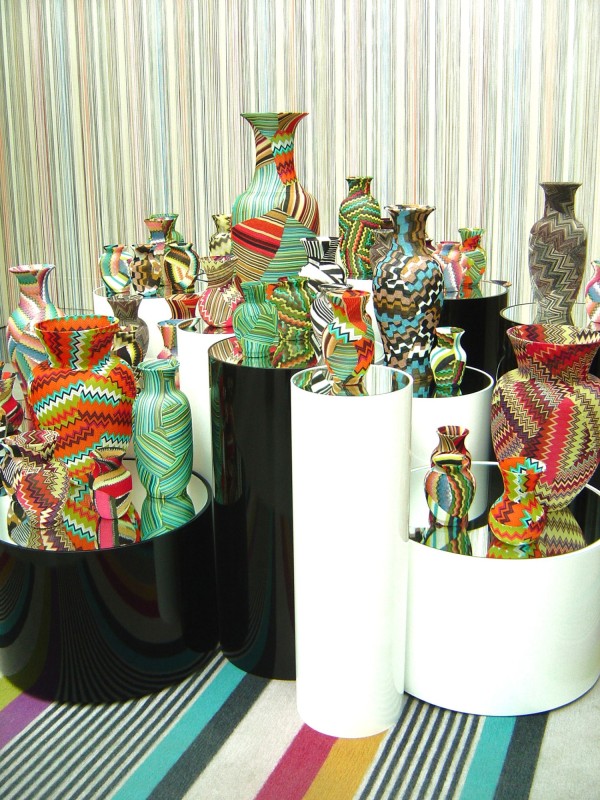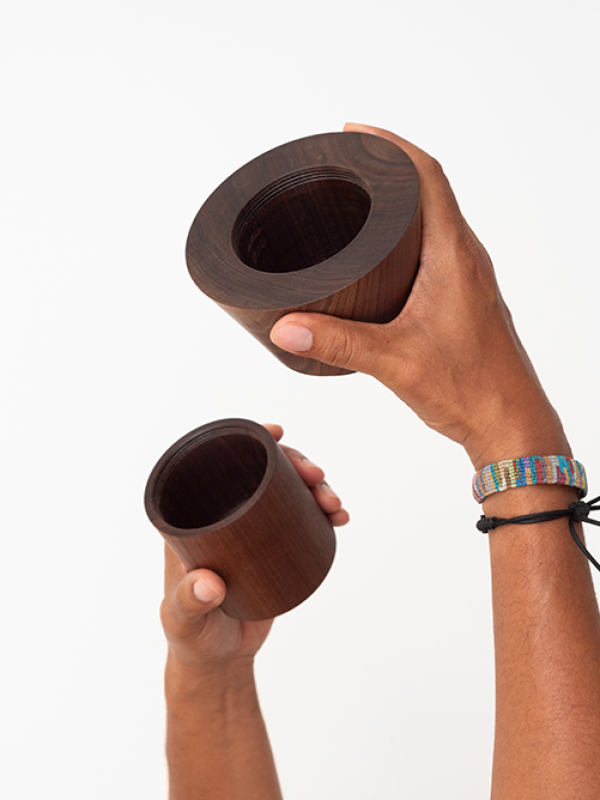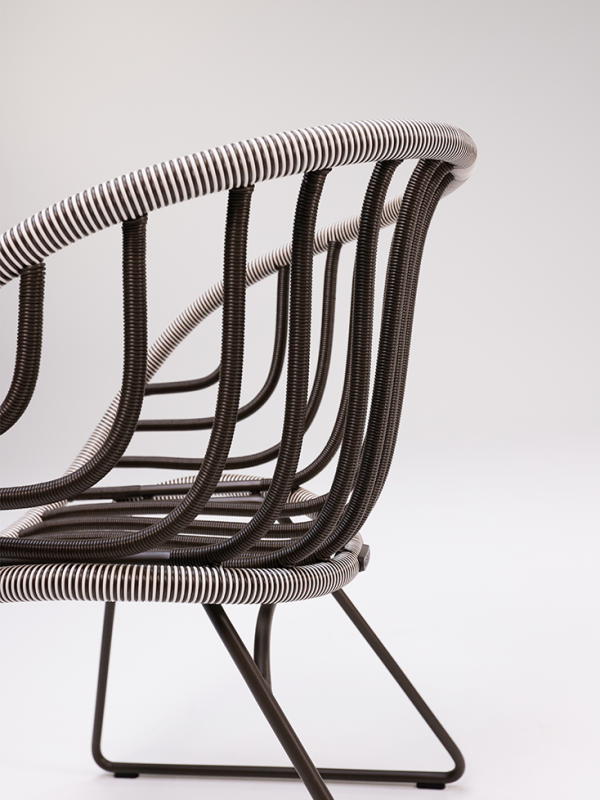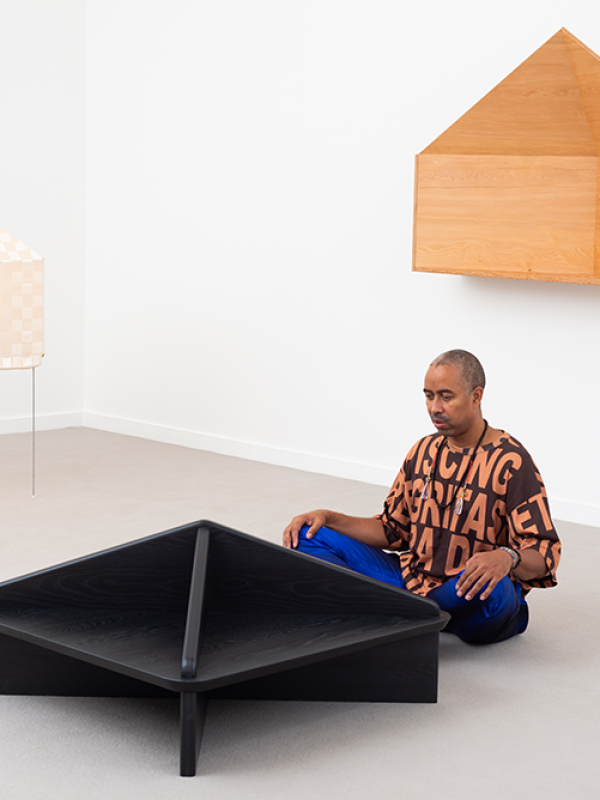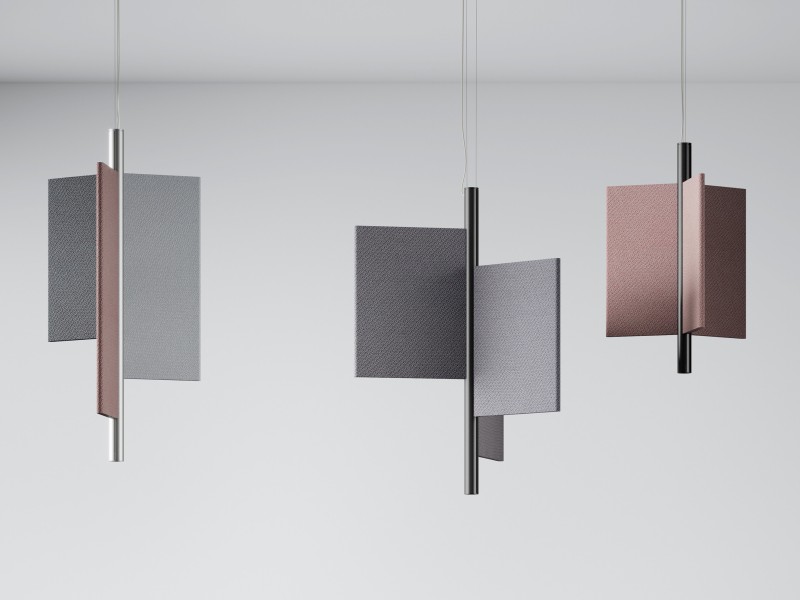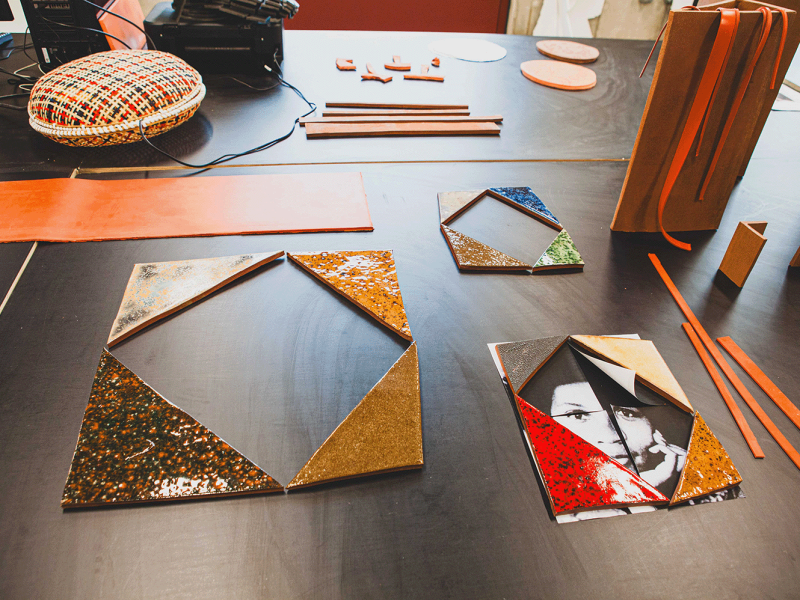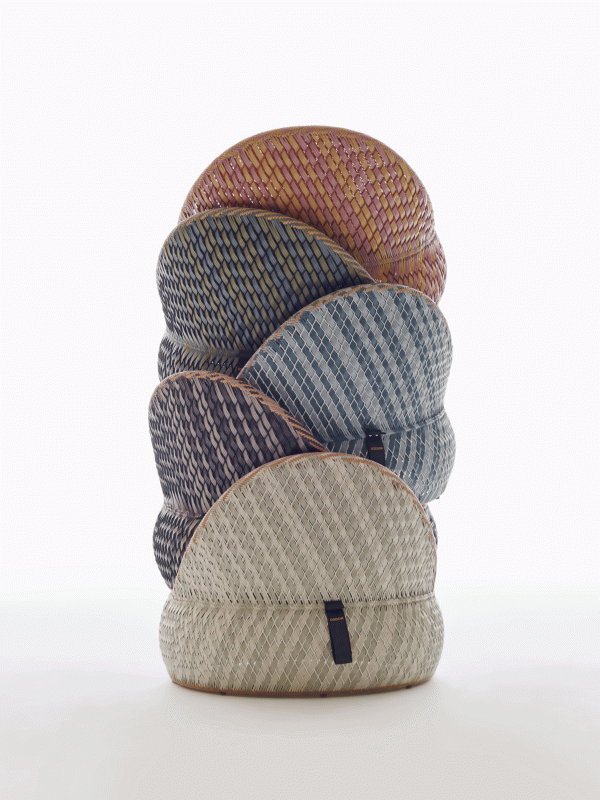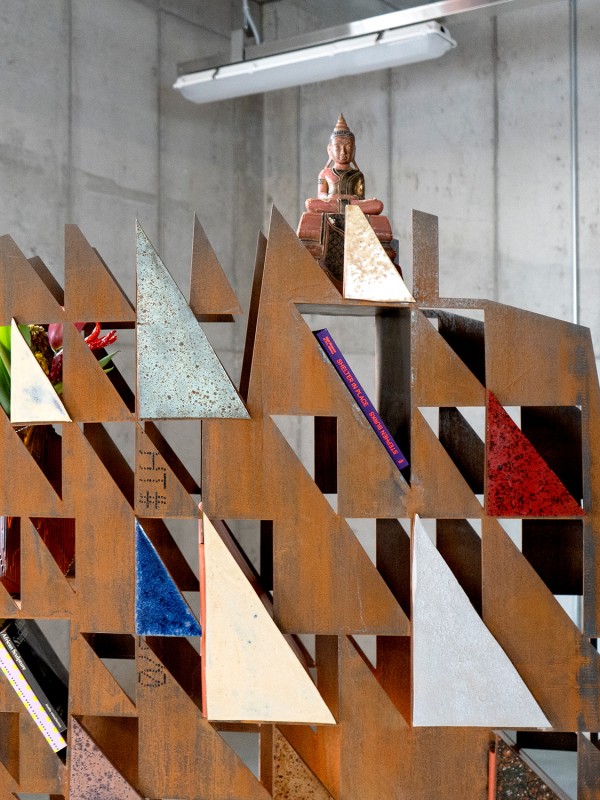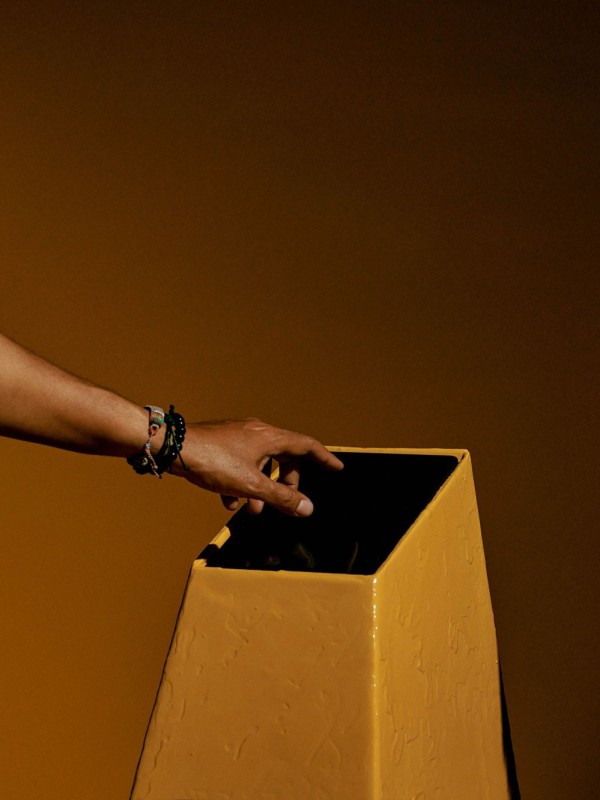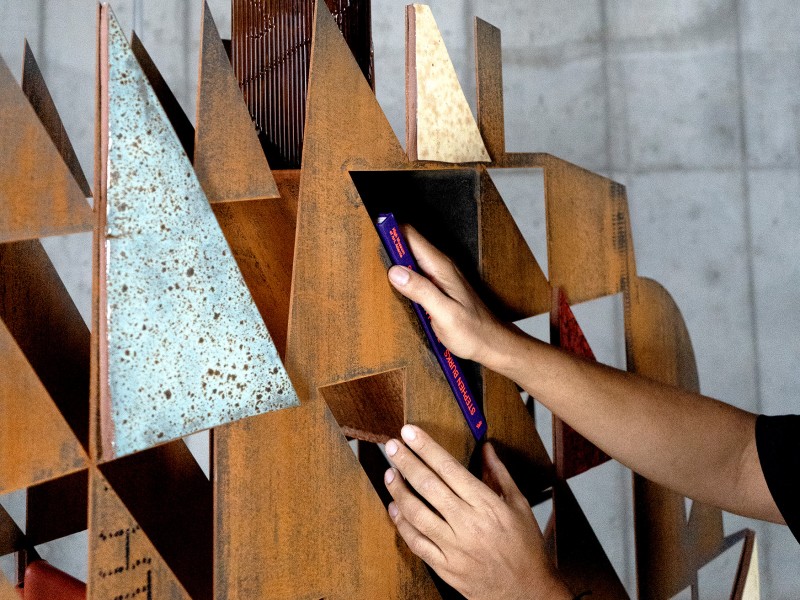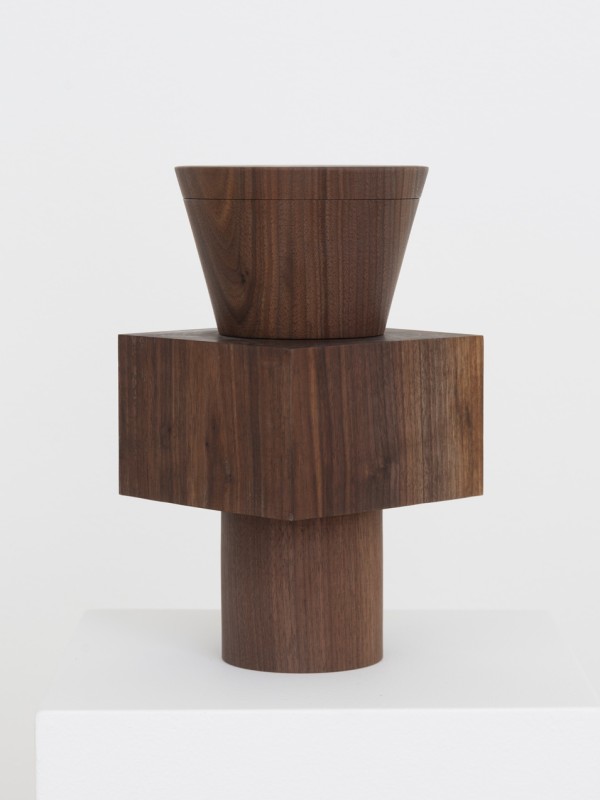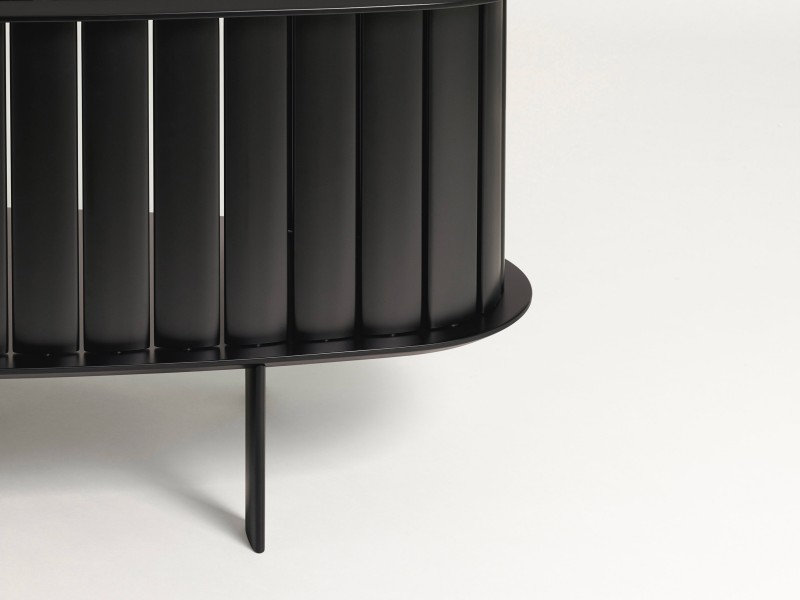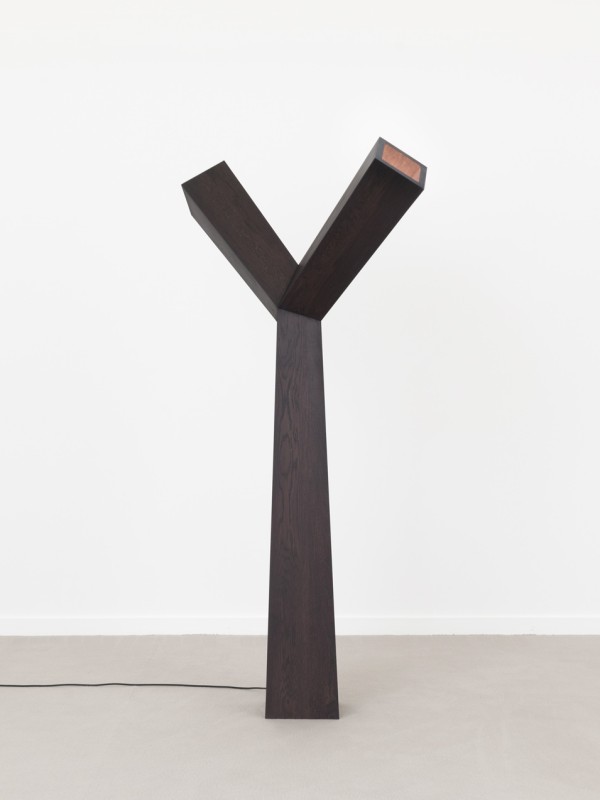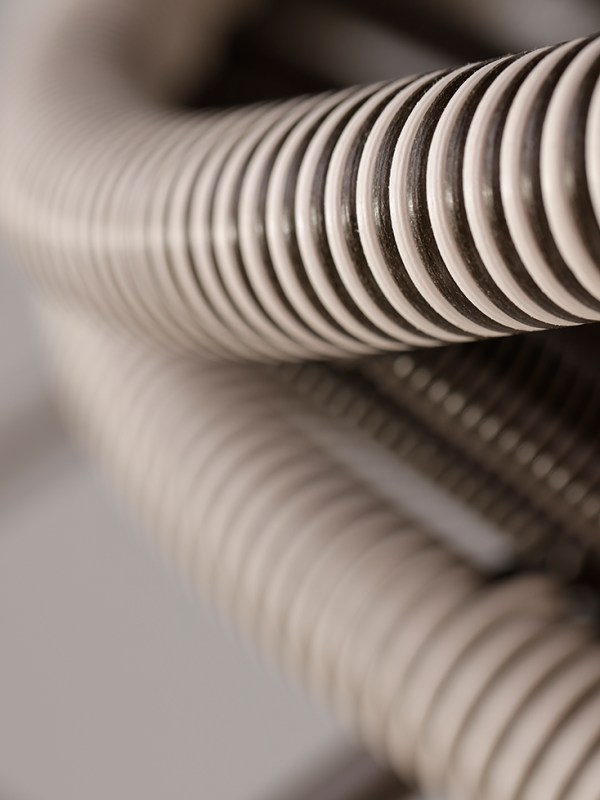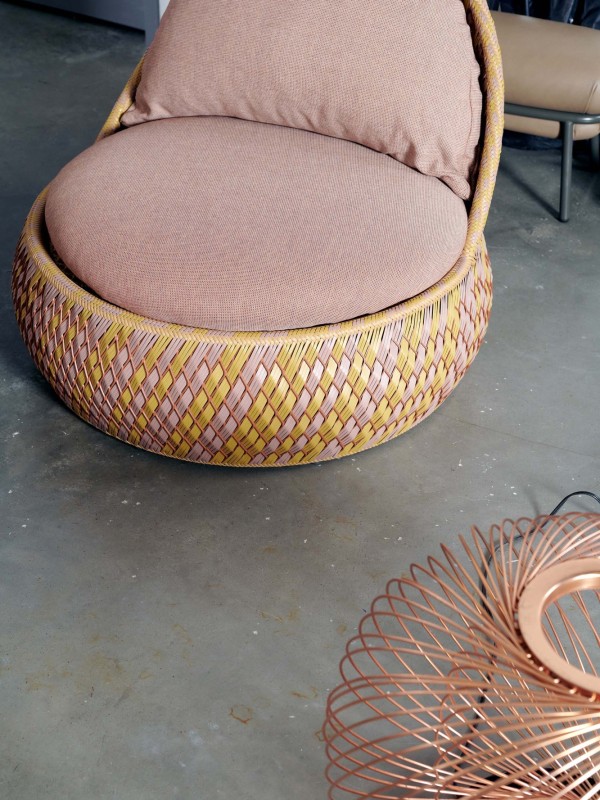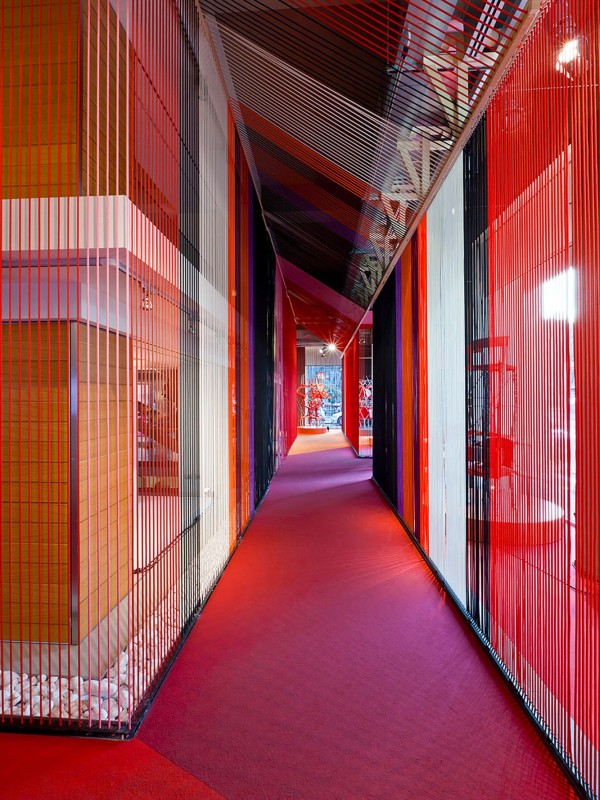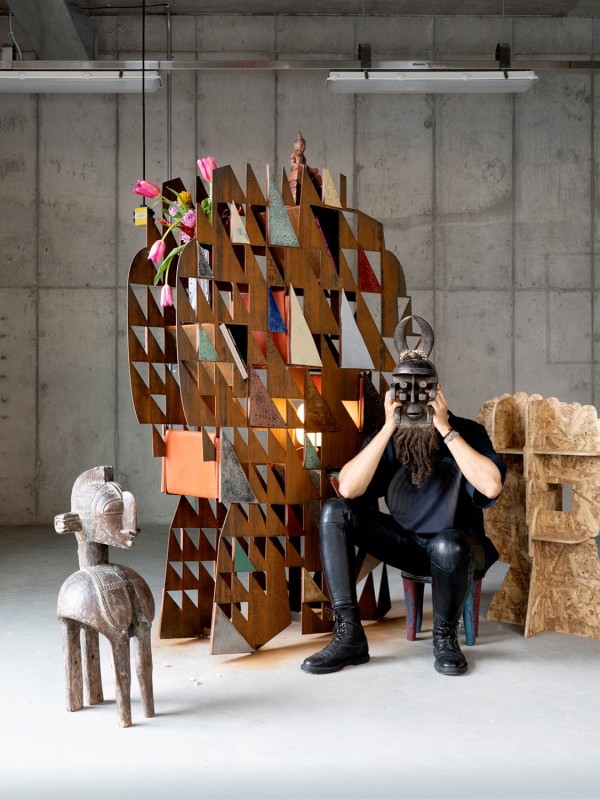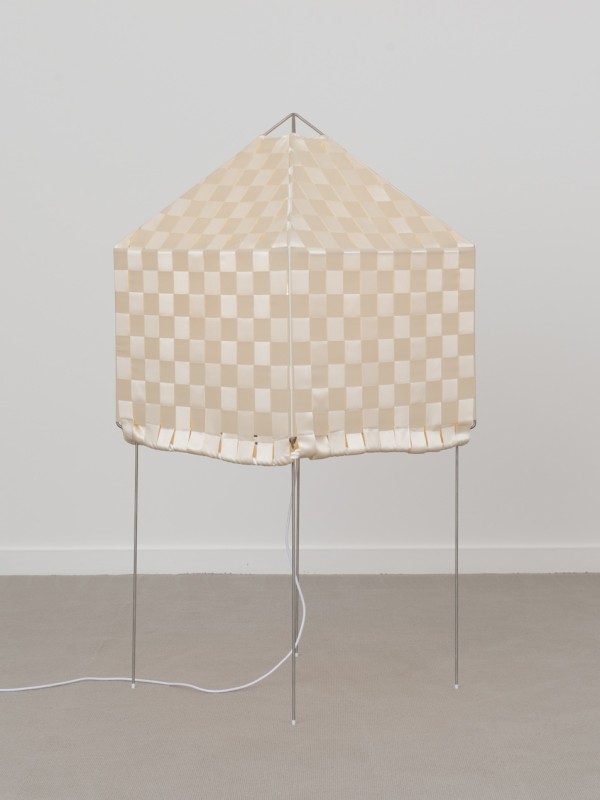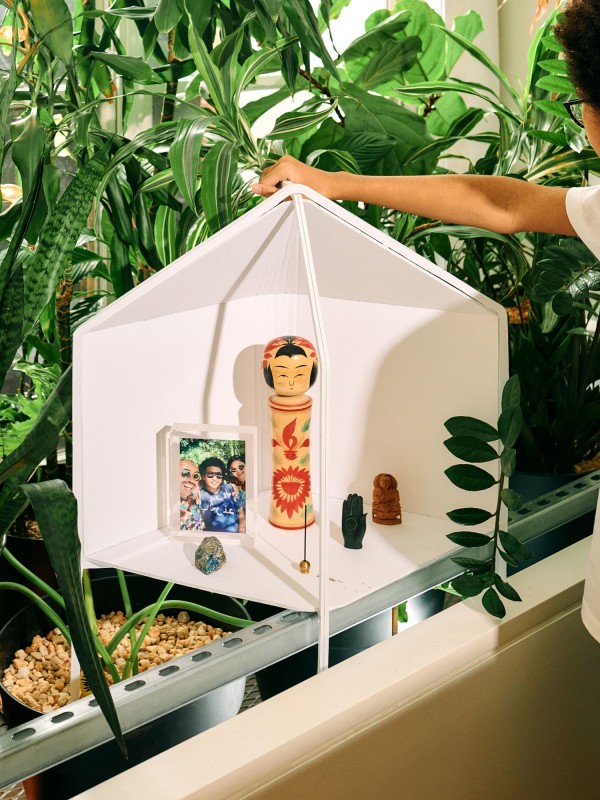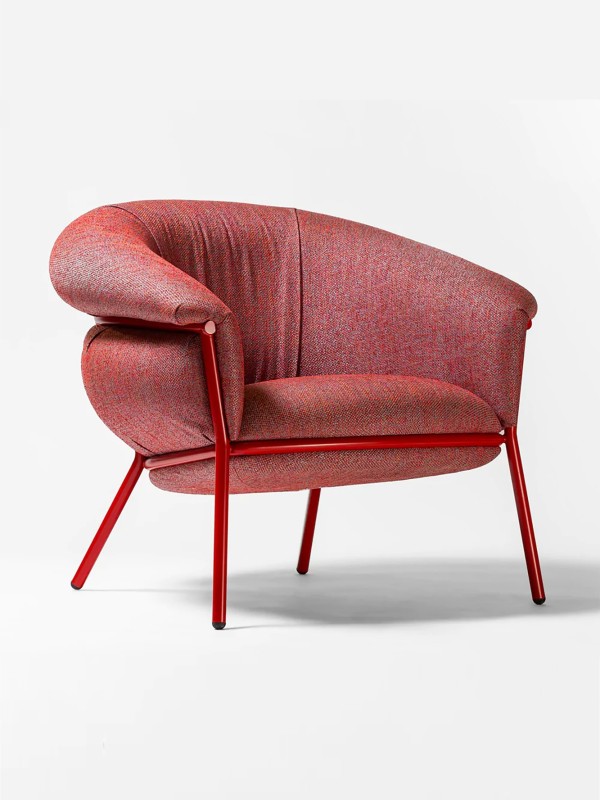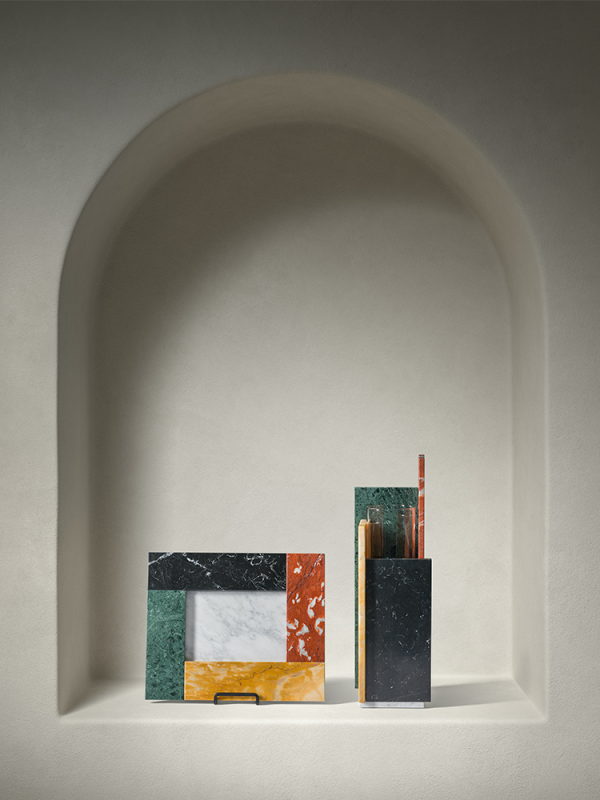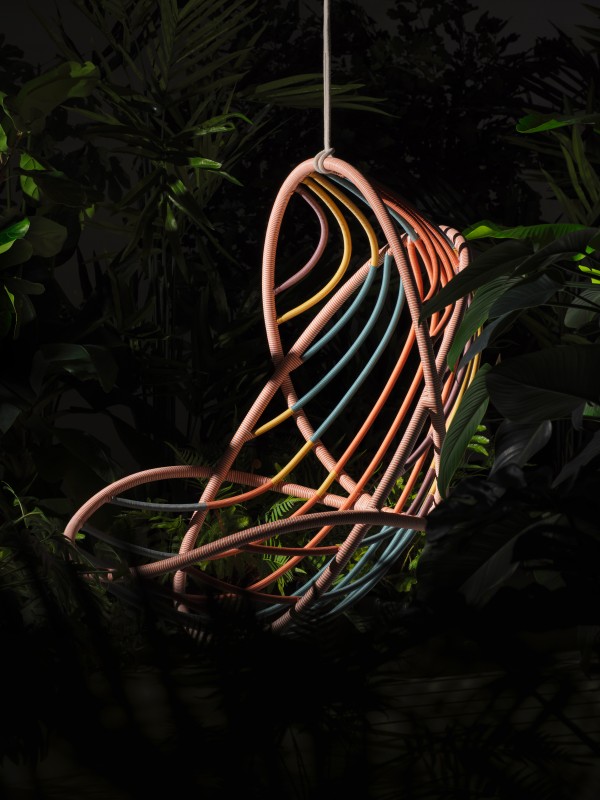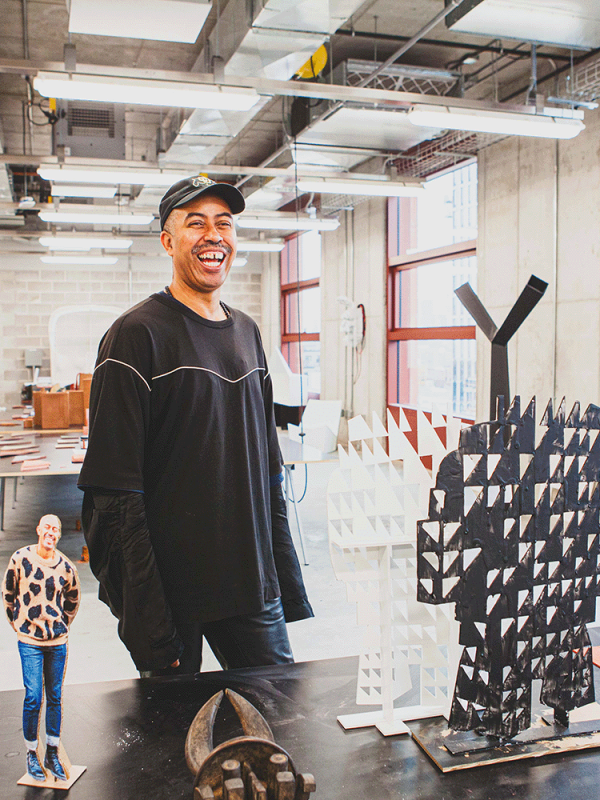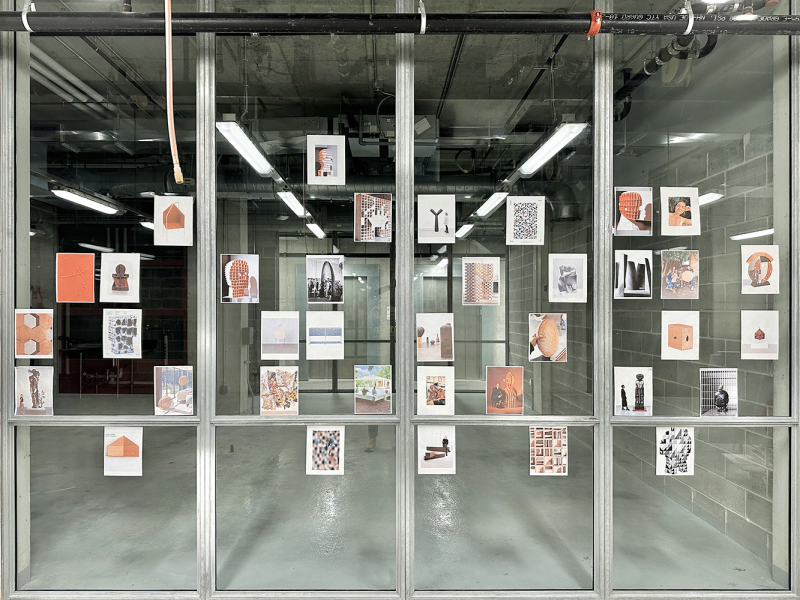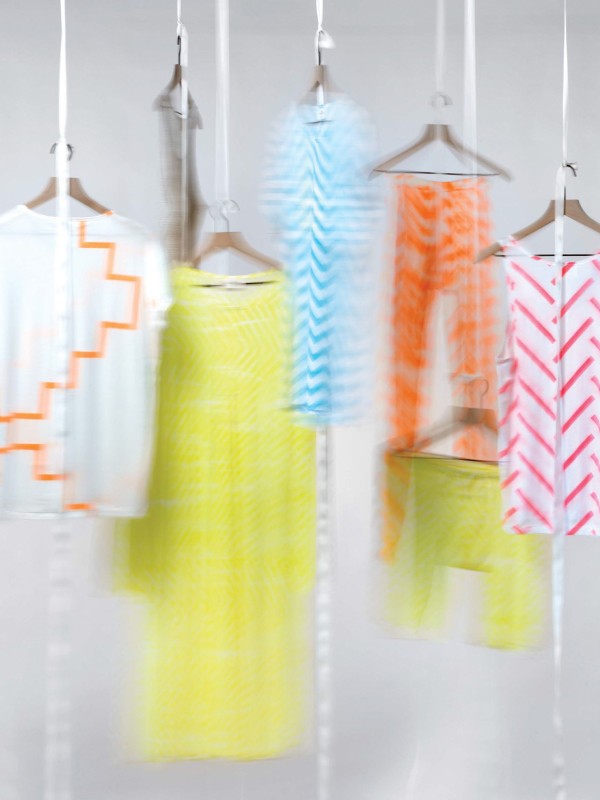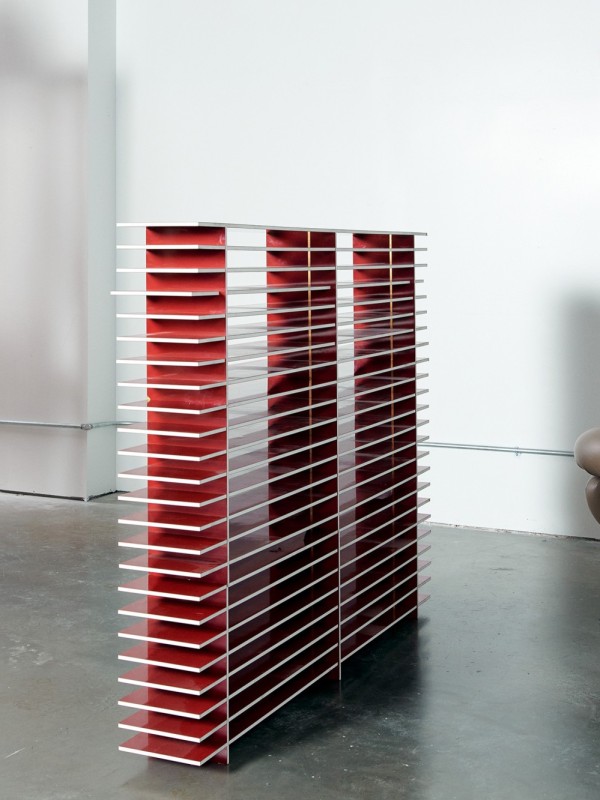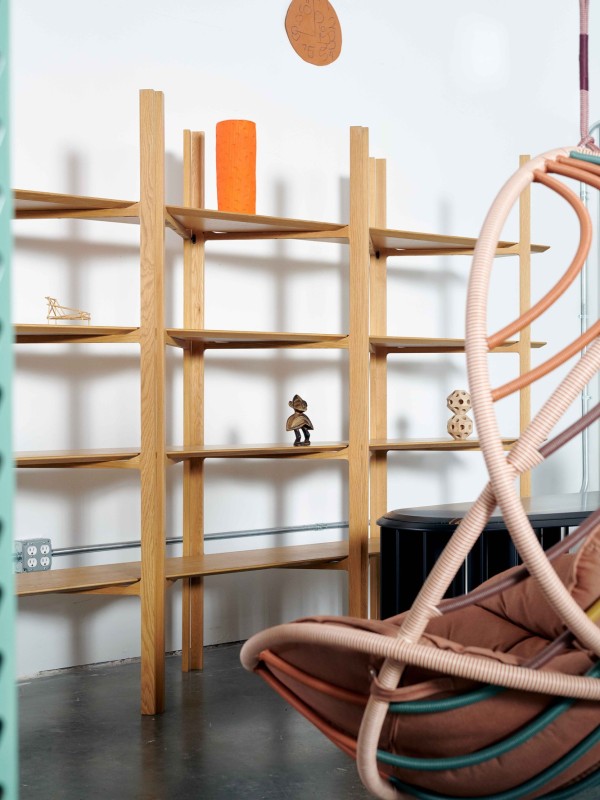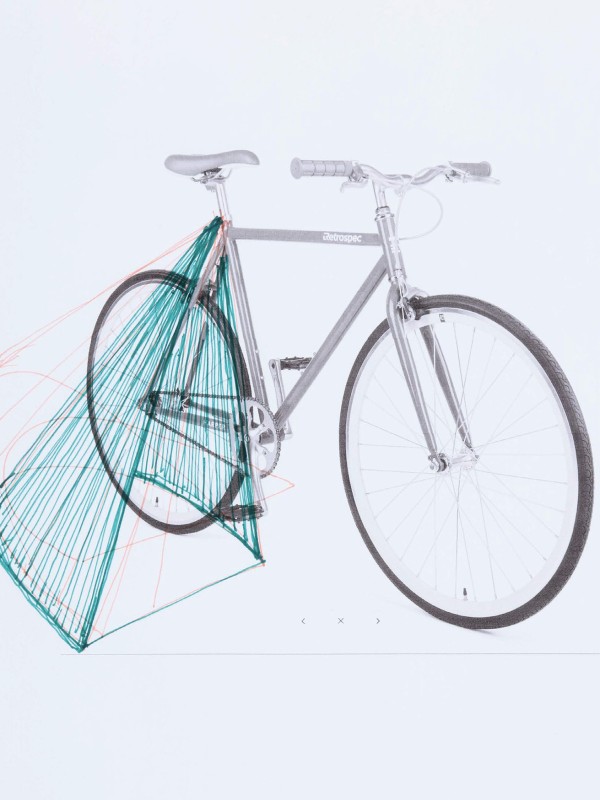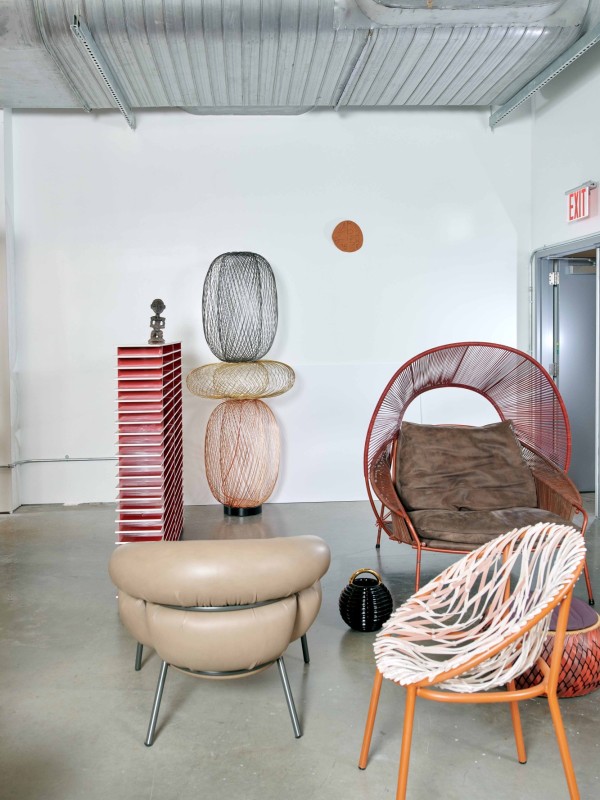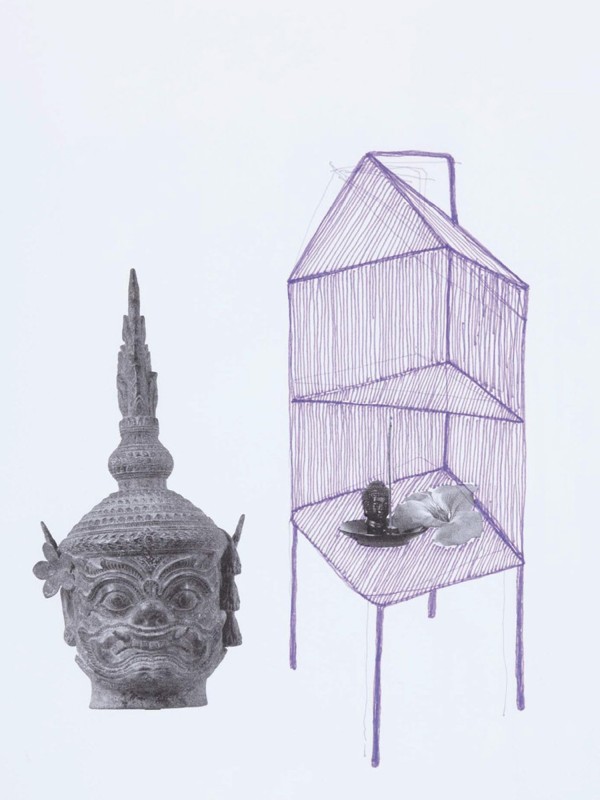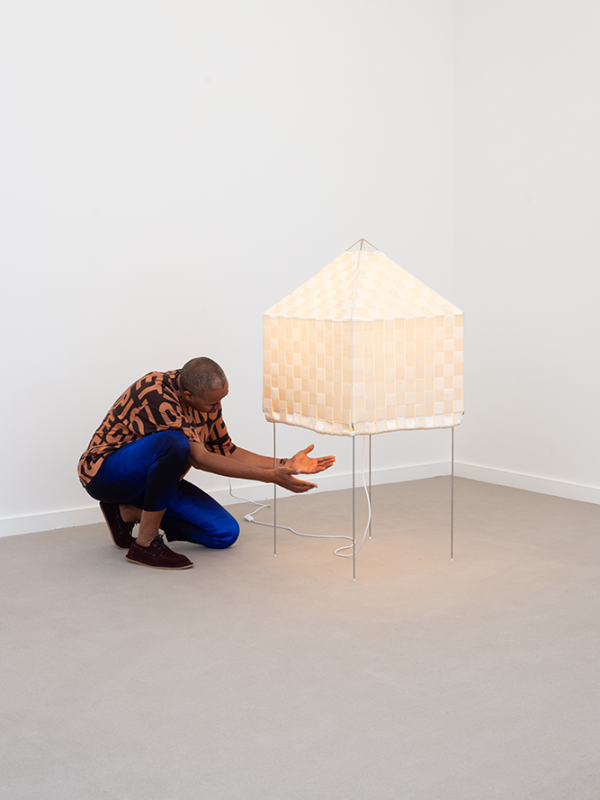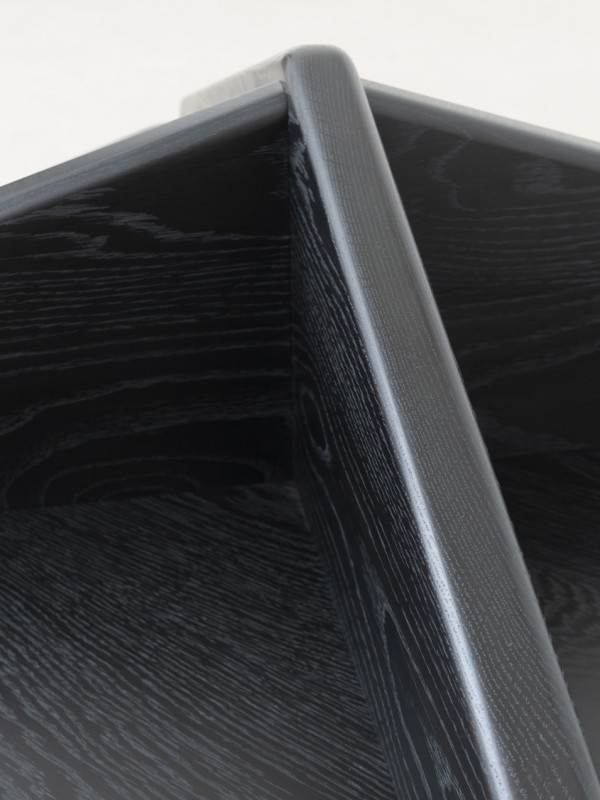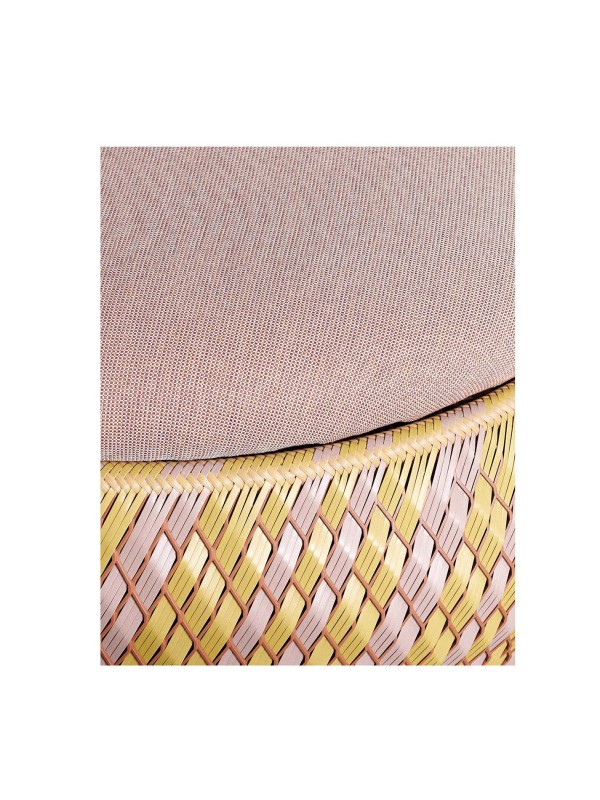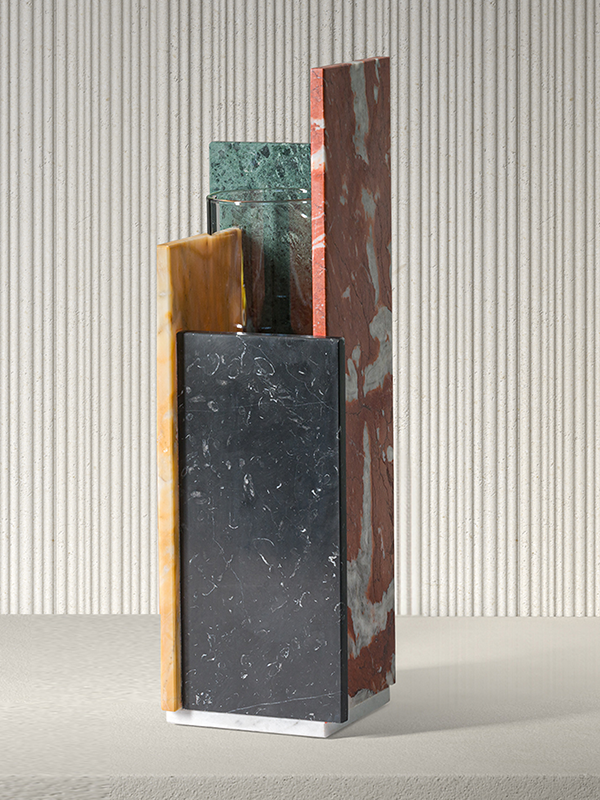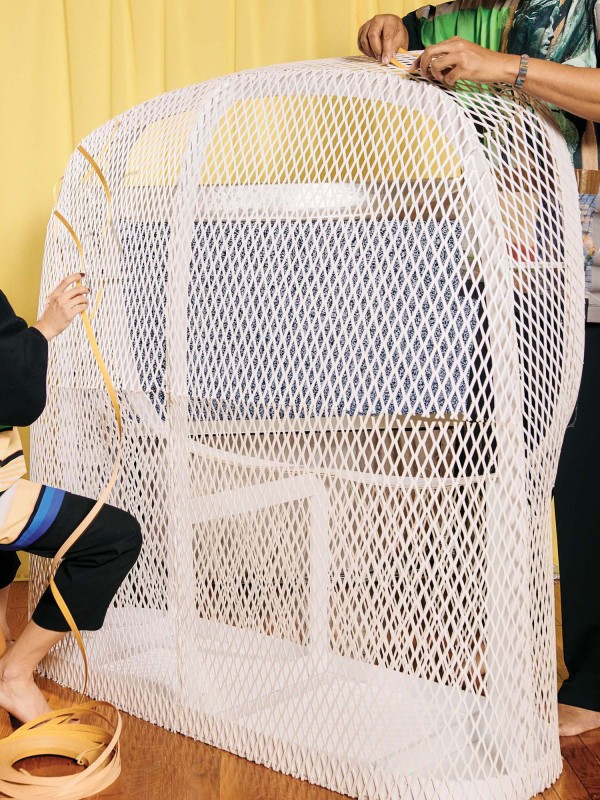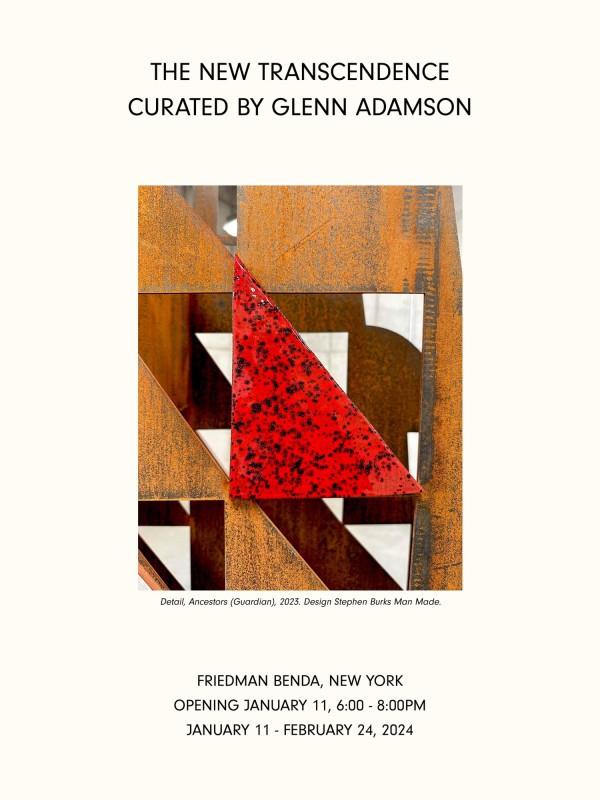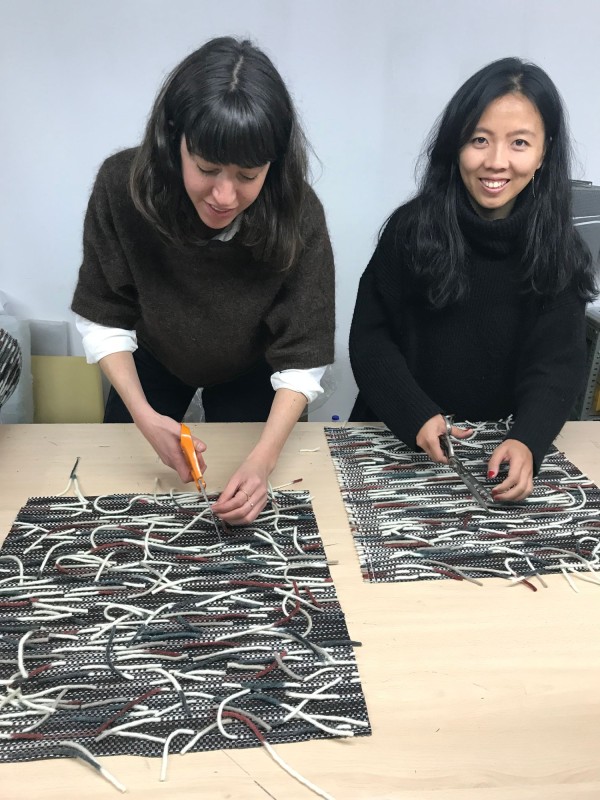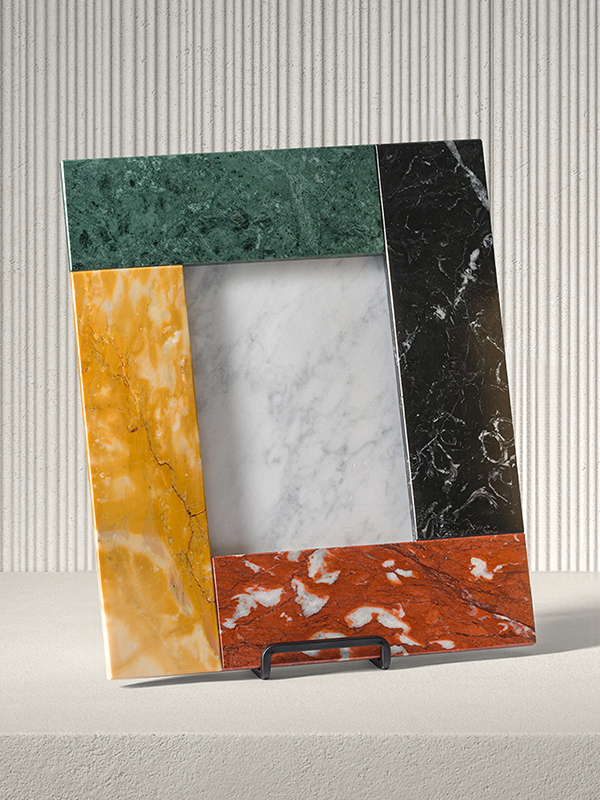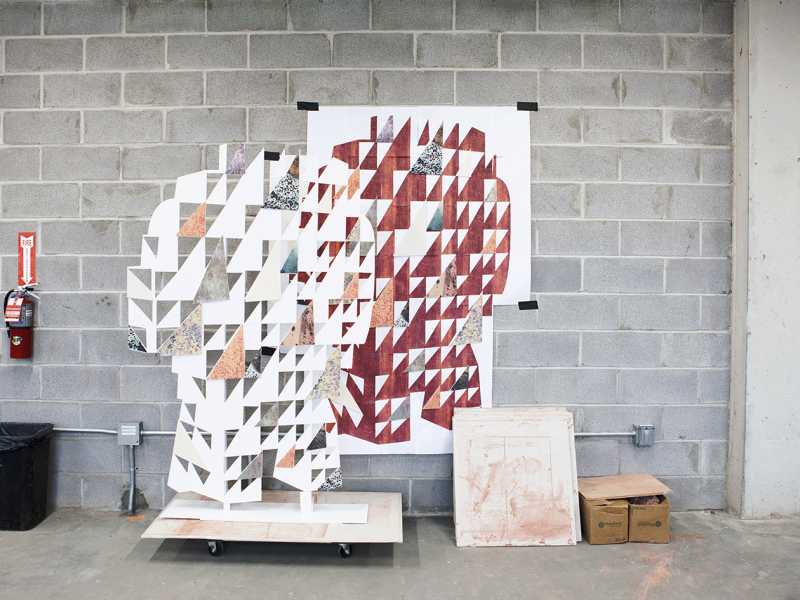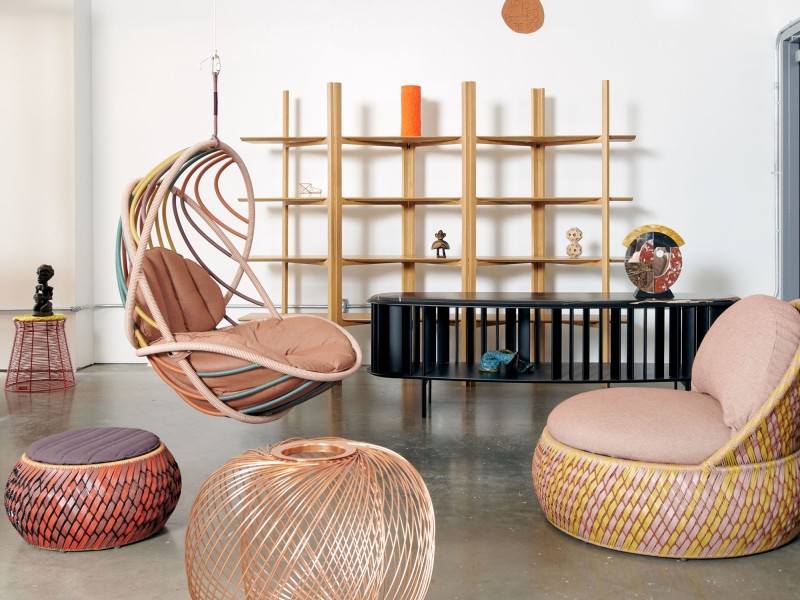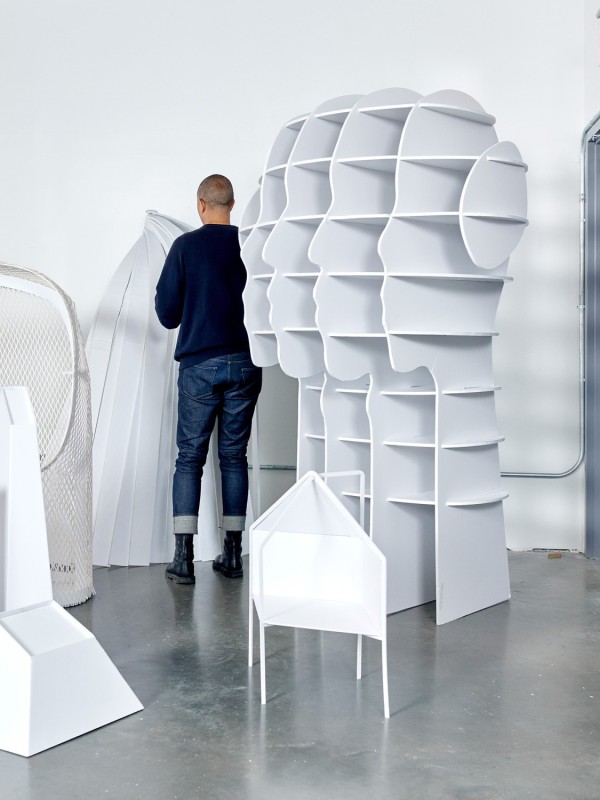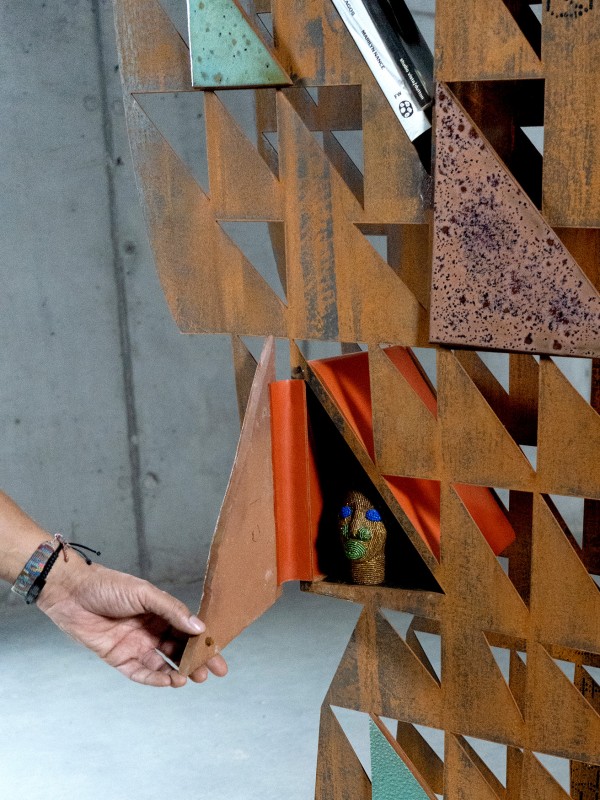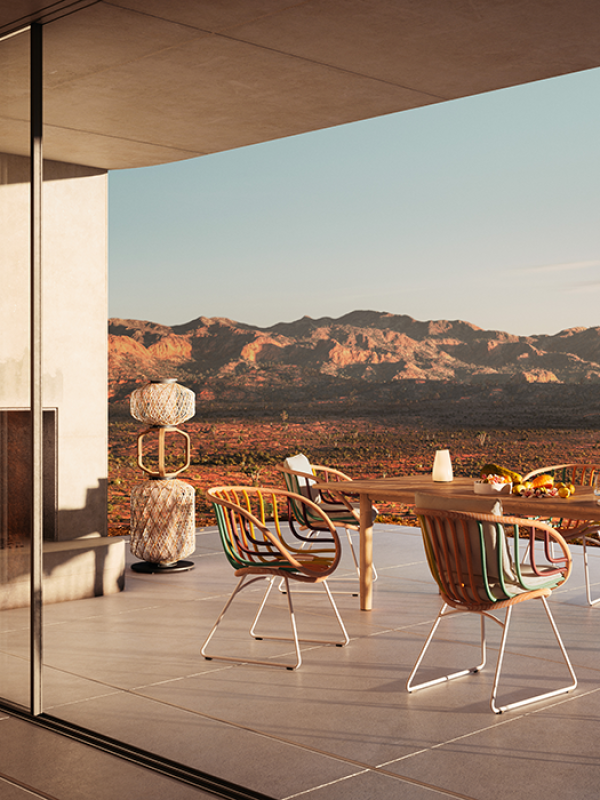About
Stephen Burks Man Made is a hands-on collaborative design studio deeply invested in the transformative power of craft techniques that challenge the limits of new technologies within industrial production.
We believe in a pluralistic vision of design that is inclusive of all cultural perspectives and backgrounds.
We bring the hand to industry through a community-driven, workshop-based practice.
Our projects include furniture, lighting, interiors, exhibitions, and product design.
We are Stephen Burks (Principal), Malika Leiper (Cultural Director), Vara Yang (Design Consultant), and Fridolin Jeger (Design Assistant).
Our solo exhibition Stephen Burks: Shelter in Place, formerly at the High Museum of Art in Atlanta (September 16, 2022 - March 5, 2023) is part acclaimed mid-career survey and part commissioned speculative project presenting the last decade of professional practice alongside new expressions of radical domesticity through handcrafted industrial design.
Most recently, Stephen Burks: Spirit Houses opened at Volume Gallery in Chicago and Stephen Burks: Shelter in Place (November 19. 2023 - April 16, 2024) opened at the Philadelphia Museum of Art where Stephen became the first African American to receive the Collab Design Excellence Award.
Follow us on Instagram @stephenburksmanmade and contact us at info@stephenburksmanmade.com.
Stephen Burks
Chicago native, Stephen Burks is an industrial designer, product development consultant, and educator whose innovative approach to design synthesizes craft, community, and industry. Independently and through association with various non-profits, he has collaborated with artisans and craftspeople in over ten countries on six continents. His socially engaged practice seeks to broaden the limits of design consciousness by challenging who benefits from and participates in contemporary design.
Stephen and his studio, Stephen Burks Man Made, have been commissioned by many of the world’s leading design-driven brands to develop collections that engage hand production as a strategy for innovation to express a more pluralistic vision of design including BD Barcelona, Cappellini, Dedon, MASS Design Group, Missoni, & Roche Bobois.
He has had solo exhibitions and led curatorial projects at the Studio Museum in Harlem (Stephen Burks Man Made, 2011), the Museum of Art & Design (Stephen Burks, Are You a Hybrid, 2011), and the High Museum of Art (Stephen Burks: Shelter in Place, 2022).
He has been visiting faculty and a strategic consultant to academic institutions around the globe and taught architecture and design at Berea College, Columbia University GSAPP, ECAL, the University of Arkansas Fay Jones School of Architecture & Design, and the Harvard University Graduate School of Design.
Stephen is the only African-American to win the Smithsonian Cooper Hewitt National Design Award in Product Design and the only industrial designer to be awarded the prestigious Loeb Fellowship at the Harvard Graduate School of Design.
Malika Leiper
Originally from Cambodia, Malika Leiper is interested in the culture of design across various disciplines with a particular focus on emergent contexts in Southeast Asia.
After completing her master’s in urban planning at Harvard’s Graduate School of Design, she consulted with restaurants, non-profits, local governments, and museums on research and strategies to build creative cultural capacity, often through public programming and community engagement.
She approaches design as a collaborative process of translating knowledge and insights from different worlds into one common language through technical, moral and utopian applications.
Most recently, Malika has contributed to Disegno Journal #34 as a Het Nieuwe Instituut inaugural emerging writing fellow with her first published short story, When The Words Don't Exist.
Vara Yang
Vara Yang joined Stephen Burks Man Made as an industrial designer in New York in 2017.
Before working at Stephen Burks Man Made, she worked with several startups helping them bring their products and services to the market, including smart home devices, smartwatches, smart jewelry, and 3D printers.
Now an independent consultant based in Rotterdam, she continues to work with the studio on projects at various scales from furniture design to packaging to exhibitions.
Vara received her bachelor’s in design engineering from National Cheng Kung University in Taiwan and her master’s in Industrial Design from the Rhode Island School of Design.
thinking
The Making of the Community Basket
By Stephen Burks for the Oak issue of Material Intelligence online, edited by Glenn Adamson.
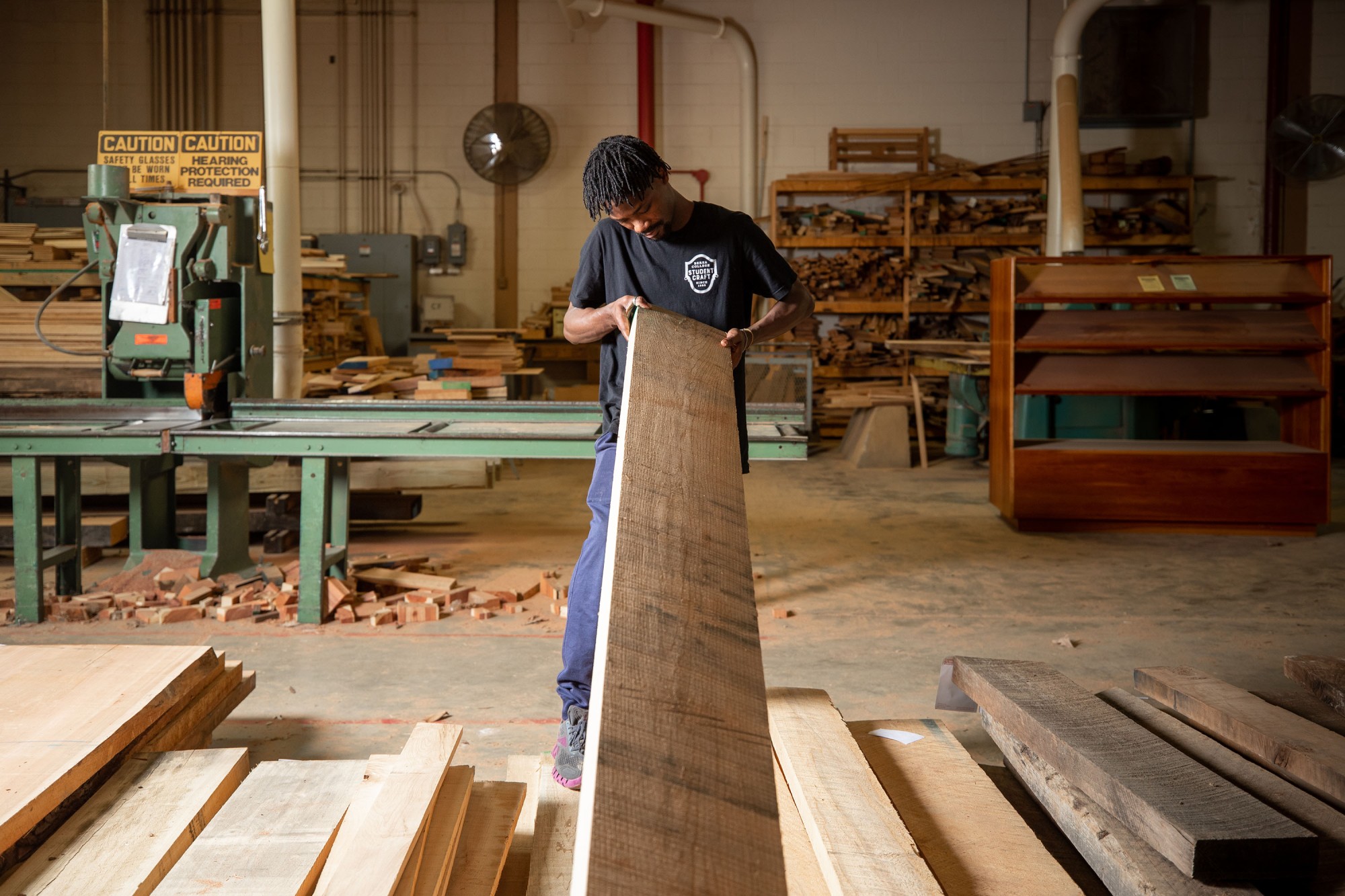
The young man lifts the heavy board to gaze down its length. Twisting it from left to right, he struggles under its weight to confirm its straightness and grain.
This board, like all of the twelve-foot-long planks in the pile beneath him, has been sawn for yield and delivered from the nearby lumber yard. It thinks it will become part of a house somewhere, perhaps a beam or joist; but in this Berea College student’s capable hands, it will become a basket.
Yes, the mighty oak tree, the stuff of legends, is also the traditional basket maker’s wood of choice in Appalachia, as elsewhere in the eastern United States.
Not because it stands tall, but because of the length and strength of its fibers which make it both strong and perfectly bendable for weaving.
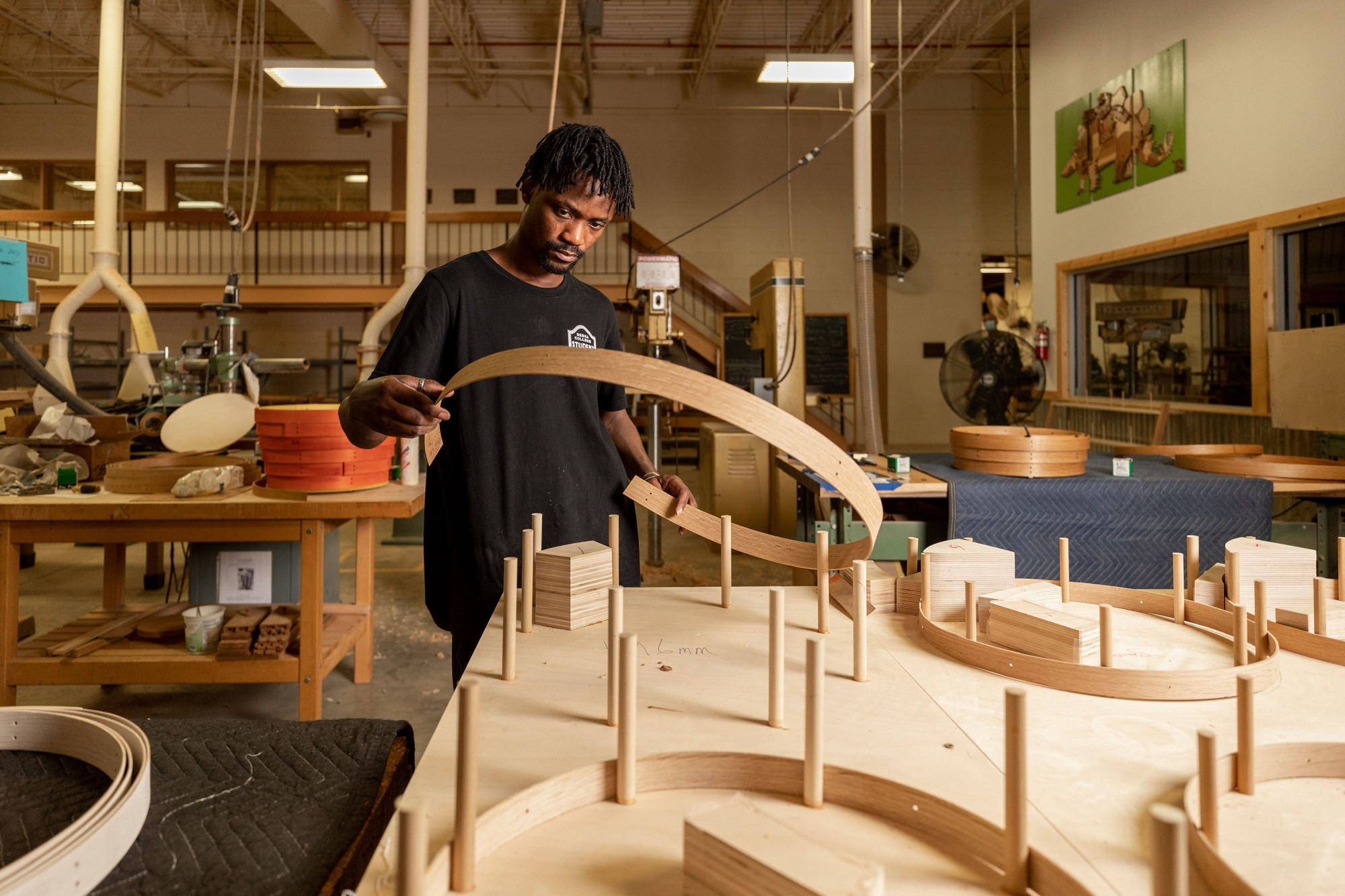
Even though he has only worked in woodcraft at Berea for a year, Joseph knows that oak sawn this way is not ideal for basketry – it’s just that the lumber yard prices per board foot are what Berea College Student Craft can afford.
He also knows that to make baskets from oak, you have to cut it fairly thin, parallel with the grain, running the grain as long as possible.
The traditional way of splitting wood from a log would produce bands perfect for weaving; the quarter and rift sawn bands Joseph has to choose from are exactly the opposite and need to be “trued up” or corrected before they can be cut into bands suitable for basketry.
He continues the process of unlocking the potential of these industrially produced boards, while thinking about the great oak trees these wide planks must have come from.
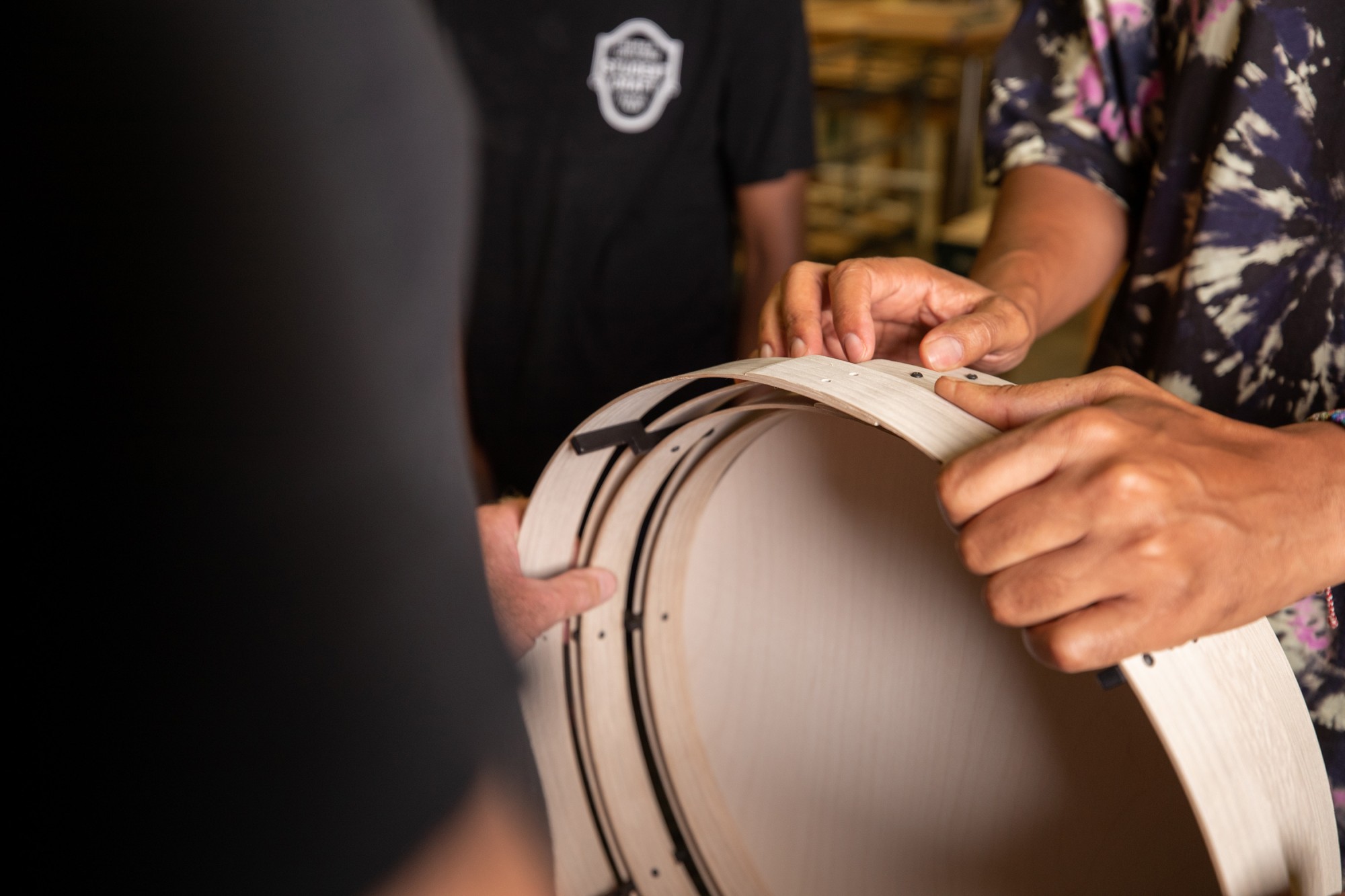
The oak isn’t the tallest tree, nor the widest, nor the strongest.
What sets it apart is resilience.
Without record breaking distinction, oak trees have managed to thrive in a broad range of conditions contributing to cultures all over the world in the production of long-lasting everyday objects.
In America, the northern red oak is most prized for lumber, and is marketed as red oak regardless of species.
Unlike white oak, it has open capillaries. A slim piece of it can actually be used as a straw, as its open cellular structure actually allows air to pass through it.
Unfortunately, natural red oak rots easily outdoors because these openings give fungus easy access.
When it is treated with a preservative compound, however, the capillaries absorb it deeply, and it resists rot better than cured white oak heartwood.
At most lumber yards, it’s difficult to tell these two types of oak apart and they are often mixed up; confusingly, white oak can often appear darker than red.
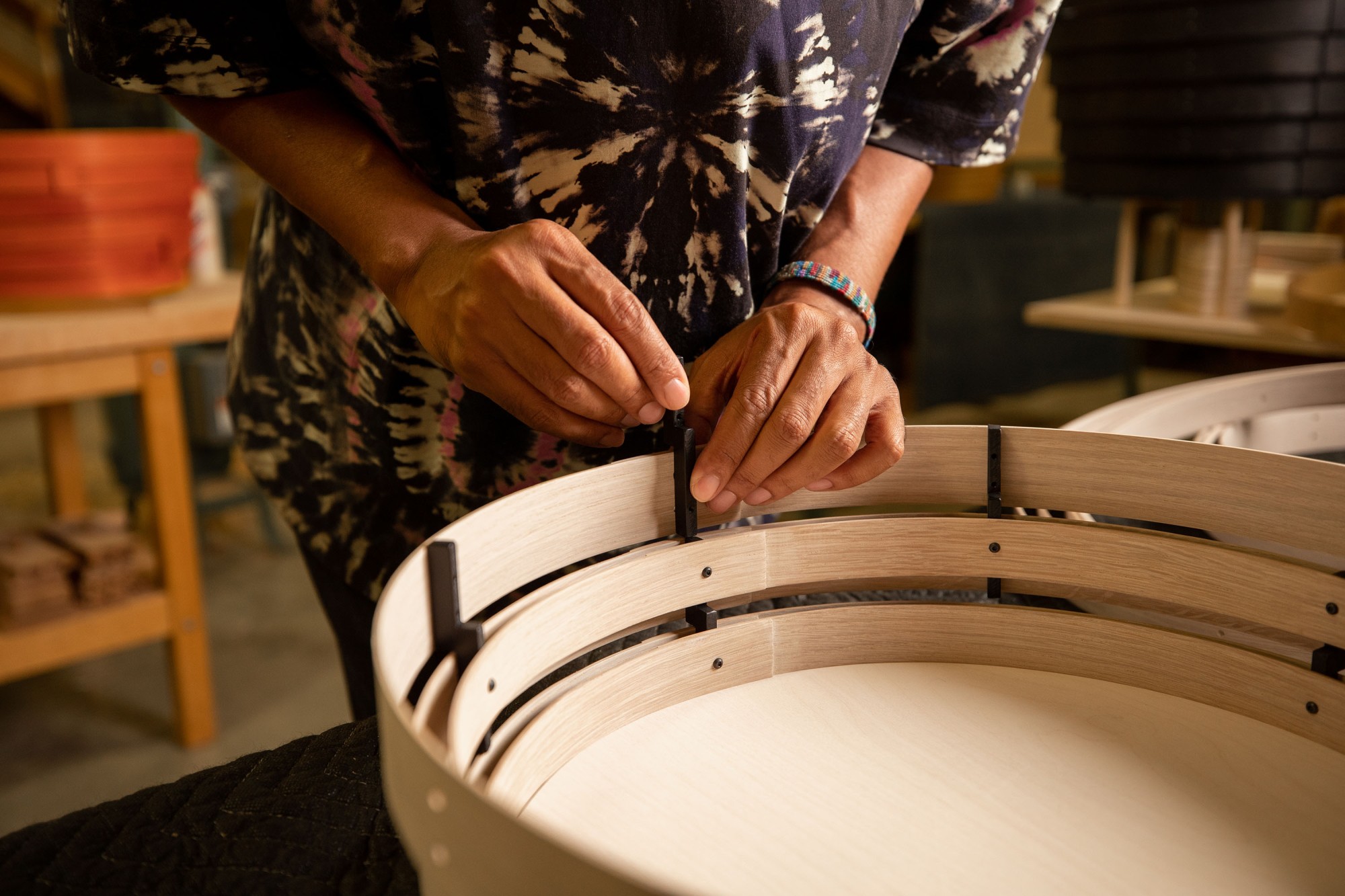
Despite their differences in cellular structure, the overall properties of the two timbers are nearly the same.
Oak is dense, nearly a half-ounce per cubic inch, hence its reputation for great strength and hardness.
Because of its high tannin content, oak is also very resistant to insect damage.
And, of course, it’s often chosen for traditional furniture because of its very appealing grain markings, especially when quartersawn.
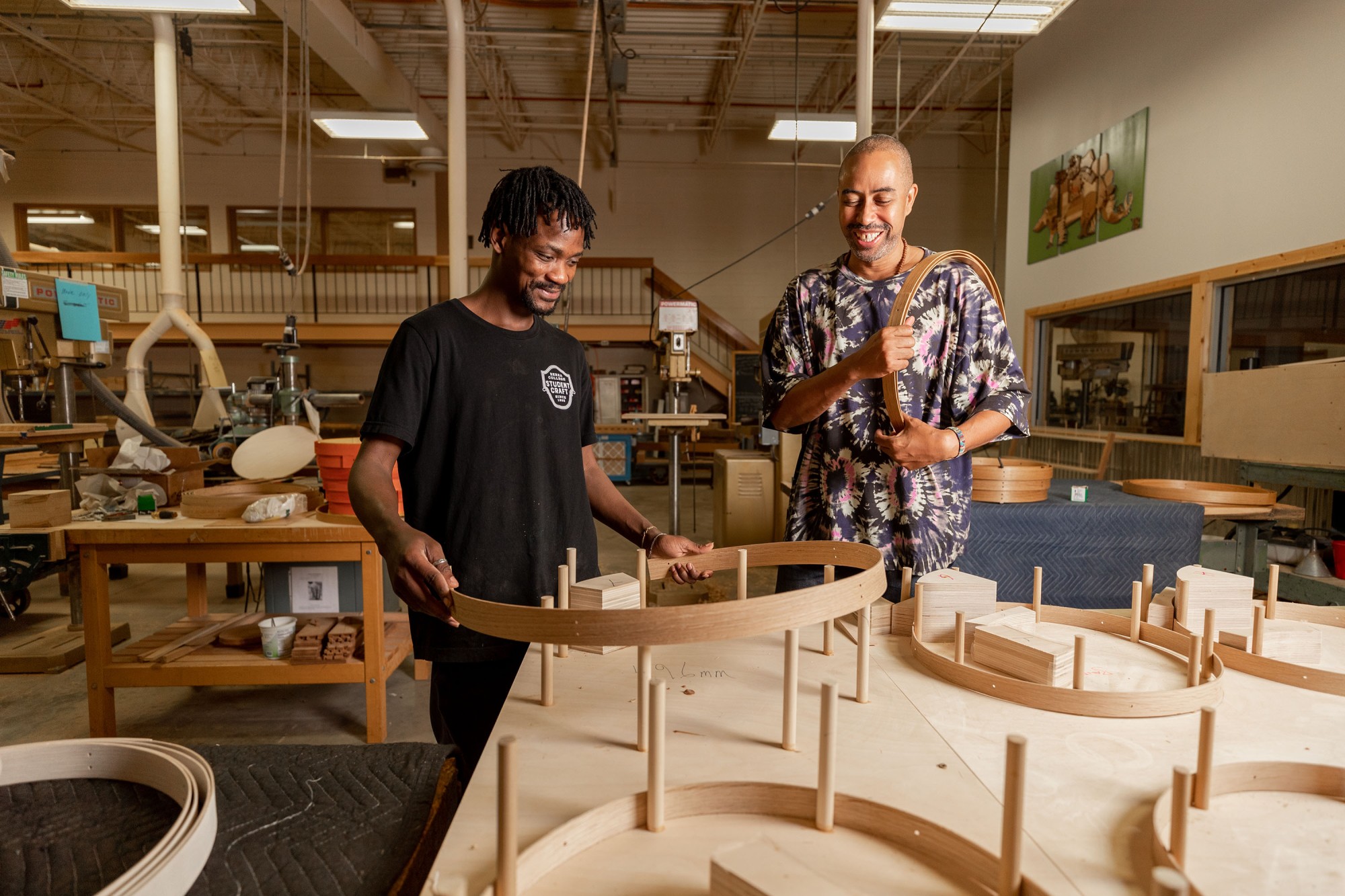
“The hours spent by the true craftsman in bringing out the grain, which has long been imprisoned in the trunk of the tree, are themselves an act of creation,” wrote celebrated wood craftsman George Nakashima in the
book The Soul of a Tree.
In fact, it was exactly these highly legible grain markings that led me to suggest white oak as a preferred material for the Berea College Student Craft Community basket.
The design builds on the tradition of Shaker pantry boxes.
It is constructed from a series of two-inch bands of oak, steam bent into rings and bolted together in tension to aluminum links.
Conceptually, the initial design was less about the wood and more about performance.
I wondered, would the material maintain its integrity once it was cut so thin and steam bent?
Could we make perfect rings from it? When overlapped and bolted, would it lay as flat as a Shaker box’s graceful swallowtail joint?
When designing for hand production, I’ve always considered the artisans I work with to be my collaborators.
At Berea College, we had agreed to a participatory design process.
The students and I relied on Aaron Beale, director of student craft, and his staff to work closely with me to solve production issues efficiently and elegantly.
After weeks of helping me reverse engineer the basket with the students, Aaron remarked to me, “Although the basket looks like a simple product to produce, it’s a great product for students to learn how the wood works.
It’s not a complex product, but it teaches the student as many lessons as a fine piece of cabinetry or a fine chest of drawers.
You really have to understand the wood to make it work.”
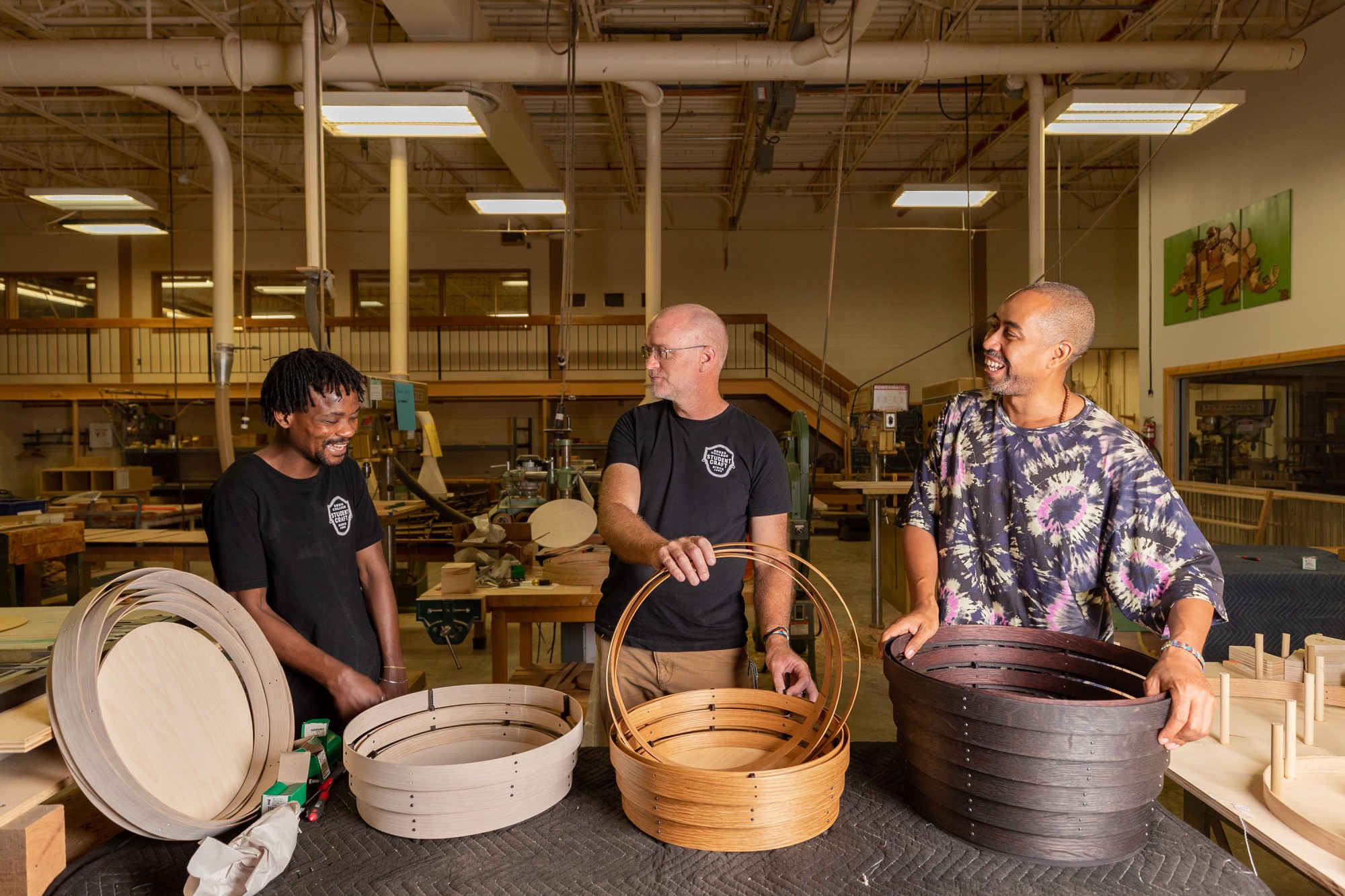
Woodcraft students like Joseph learn several key techniques making the Community Basket.
Truing up the board is one of them.
Secondarily, they learn to cut the average 12' board efficiently enough to yield 40 to 50 one-eighth inch by two inch wide bands, which produces three to four finished baskets per board.
This is actually trickier than it sounds, as the student maker is also responsible for keeping the bands organized by grain orientation in the basket.
The cut of the lumber changes from quarter sawn to rift sawn to plain or flat sawn, causing the grain of the basket to change as well.
The six outer bands need to be cut from the same board, as do the six inner bands.
This subtlety is not lost on the Berea students, as the stained color and grain patterning can vary widely.
Understanding how to see and match up the grain is a big part of making a successful basket.
Admittedly, when designing the basket in wood, I wasn’t thinking about the material in itself.
I was just thinking about the result that I wanted to achieve.
Ultimately, oak was the right choice, for its educational potential in the production process, its flexibility and strength, and the beauty of the finished product.
Ordinary, locally sourced Appalachian oak complemented the Community basket every step of the way.
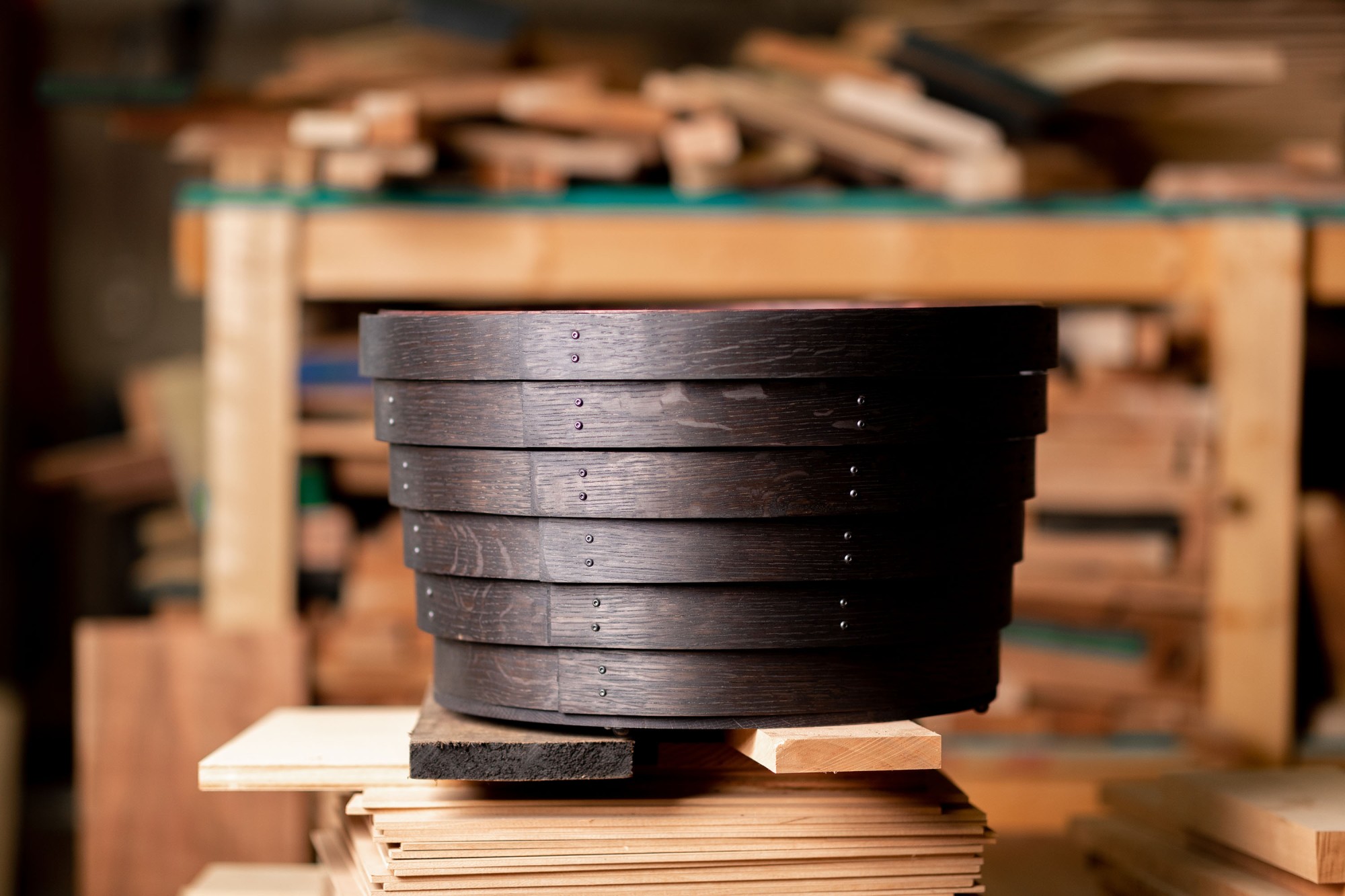
Material Intelligence
Stephen Burks Man Made & Berea College
Miller Knoll x Berea College: A Progressive Partnership
Photography Justin Skeens
The New York Times by Lauren Messman
April 15, 2024You can always see where you would like to sit at the annual festival of furnishings and household objects.
Perez Projects Presents BD Barcelona: A New Perspective, 50 Years of Design
April 16, 2023Stephen Burks: Shelter in Place Book Review in Untapped Journal by Francesca Perry
February 13, 2023The book Shelter in Place considers the possibilities, and the precedents, of the designer’s inclusive approach to creating objects for the home.
By Dennis Scully & Fred Nicolaus for Business of Home
January 23, 2023Stephen Burks wants to open the doors of the design industry.
Disegno Journal
February 15, 2021With the romanticism of a wiser woman looking back on a fleeting youth, Joan Didion once described New York City as the “shining and perishable dream itself”.
By Malika Leiper for Disegno #34 x Het Nieuwe Instituut Design Drafts #1
September 21, 2022How to begin writing about design if the word does not even exist?
By Vasia Rigou for The Chicago Reader
September 19, 2023The Volume Gallery exhibition connects past, present, and future through reverent design.
Milan Furniture Fair
April 17, 2023New Kida dining chair to be presented during 2023 Milan furniture fair
Living Corriere Della Sera No. 4
Creative Survival Tactics: At Home with Malika Leiper & Stephen Burks by Olivia Fincato
"We transformed a former bakery into a modernist gallery."
Stephen Burks for Goodee
September 1, 2019"I found myself back in school in the midst of a year-long fellowship, where I met Malika."
By Diana Budds for New York Magazine
November 7, 2023Stephen Burks Wants to Finish a 20-Year-Old Conversation With Fran Lebowitz.
Berea College Student Craft
September 26, 2019Today, Student Craft is no longer just a factory of student labor, as it had been for nearly 100 years, but is transforming into an academic program producing open-ended products.
By Stephen Burks for the Oak issue of Material Intelligence online, edited by Glenn Adamson.
June 2, 2022Yes, the mighty oak tree, the stuff of legends, is also the traditional
basket maker’s wood of choice in Appalachia, as elsewhere
in the eastern United States.
Najha Zigbi-Johnson for Volume Gallery
September 8, 2023Within this spiritual and cultural context, I engage and understand the most recent work of industrial designer Stephen Burks, who has created a collection of modern altars entitled Spirit Houses.
About
Stephen Burks Man Made is a hands-on collaborative design studio deeply invested in the transformative power of craft techniques that challenge the limits of new technologies within industrial production.
We believe in a pluralistic vision of design that is inclusive of all cultural perspectives and backgrounds.
We bring the hand to industry through a community-driven, workshop-based practice.
Our projects include furniture, lighting, interiors, exhibitions, and product design.
We are Stephen Burks (Principal), Malika Leiper (Cultural Director), Vara Yang (Design Consultant), and Fridolin Jeger (Design Assistant).
Our solo exhibition Stephen Burks: Shelter in Place, formerly at the High Museum of Art in Atlanta (September 16, 2022 - March 5, 2023) is part acclaimed mid-career survey and part commissioned speculative project presenting the last decade of professional practice alongside new expressions of radical domesticity through handcrafted industrial design.
Most recently, Stephen Burks: Spirit Houses opened at Volume Gallery in Chicago and Stephen Burks: Shelter in Place (November 19. 2023 - April 16, 2024) opened at the Philadelphia Museum of Art where Stephen became the first African American to receive the Collab Design Excellence Award.
Follow us on Instagram @stephenburksmanmade and contact us at info@stephenburksmanmade.com.
Stephen Burks
Chicago native, Stephen Burks is an industrial designer, product development consultant, and educator whose innovative approach to design synthesizes craft, community, and industry. Independently and through association with various non-profits, he has collaborated with artisans and craftspeople in over ten countries on six continents. His socially engaged practice seeks to broaden the limits of design consciousness by challenging who benefits from and participates in contemporary design.
Stephen and his studio, Stephen Burks Man Made, have been commissioned by many of the world’s leading design-driven brands to develop collections that engage hand production as a strategy for innovation to express a more pluralistic vision of design including BD Barcelona, Cappellini, Dedon, MASS Design Group, Missoni, & Roche Bobois.
He has had solo exhibitions and led curatorial projects at the Studio Museum in Harlem (Stephen Burks Man Made, 2011), the Museum of Art & Design (Stephen Burks, Are You a Hybrid, 2011), and the High Museum of Art (Stephen Burks: Shelter in Place, 2022).
He has been visiting faculty and a strategic consultant to academic institutions around the globe and taught architecture and design at Berea College, Columbia University GSAPP, ECAL, the University of Arkansas Fay Jones School of Architecture & Design, and the Harvard University Graduate School of Design.
Stephen is the only African-American to win the Smithsonian Cooper Hewitt National Design Award in Product Design and the only industrial designer to be awarded the prestigious Loeb Fellowship at the Harvard Graduate School of Design.
Malika Leiper
Originally from Cambodia, Malika Leiper is interested in the culture of design across various disciplines with a particular focus on emergent contexts in Southeast Asia.
After completing her master’s in urban planning at Harvard’s Graduate School of Design, she consulted with restaurants, non-profits, local governments, and museums on research and strategies to build creative cultural capacity, often through public programming and community engagement.
She approaches design as a collaborative process of translating knowledge and insights from different worlds into one common language through technical, moral and utopian applications.
Most recently, Malika has contributed to Disegno Journal #34 as a Het Nieuwe Instituut inaugural emerging writing fellow with her first published short story, When The Words Don't Exist.
Vara Yang
Vara Yang joined Stephen Burks Man Made as an industrial designer in New York in 2017.
Before working at Stephen Burks Man Made, she worked with several startups helping them bring their products and services to the market, including smart home devices, smartwatches, smart jewelry, and 3D printers.
Now an independent consultant based in Rotterdam, she continues to work with the studio on projects at various scales from furniture design to packaging to exhibitions.
Vara received her bachelor’s in design engineering from National Cheng Kung University in Taiwan and her master’s in Industrial Design from the Rhode Island School of Design.
- 2023 Ancestors (Guardian) Friedman Benda
- 2023 Precioso Salvatori
- 2023 Spirit Houses Volume Gallery
- 2023 On New Cosmologies: Stephen Burks Approaches the Sacred Najha Zigbi-Johnson for Volume Gallery
- 2023 The Sacred and Profound By Vasia Rigou for The Chicago Reader
- 2022 Shelter in Place Prototypes High Museum of Art, Atlanta
- 2023 Kida Dining Chair Dedon
- 2023 A Casa Di Burks Living Corriere Della Sera No. 4 Creative Survival Tactics: At Home with Malika Leiper & Stephen Burks by Olivia Fincato
- 2023 BD Barcelona 50th Features Grasso Perez Projects Presents BD Barcelona: A New Perspective, 50 Years of Design
- 2023 Zenith Stephen Burks Man Made
- 2018 Grasso Ceramics BD Barcelona
- 2020 Kida Dedon
- 2019 Kida in Production Dedon
- 2023 Business of Home Podcast By Dennis Scully & Fred Nicolaus for Business of Home
- 2018 Grasso BD Barcelona
- 2008 Horizon Tod's
- 2017 The Others Dedon
- 2019 Islands Living Divani
- 2019 Home as Project Stephen Burks for Goodee
- 2021 Welcome to Contemporaries Disegno Journal
- 2012 Dala Dedon
- 2013 Anwar Parachilna
- 2022 When The Words Don't Exist By Malika Leiper for Disegno #34 x Het Nieuwe Instituut Design Drafts #1
- 2023 Curbed 21 Questions By Diana Budds for New York Magazine
- 2021 Anywhere Kitchen USM Modular Furniture
- 2022 The Making of the Community Basket By Stephen Burks for the Oak issue of Material Intelligence online, edited by Glenn Adamson.
- 2021 Friends & Neighbors Salvatori
- 2023 How Stephen Burks “Future-Proofs” Craft Stephen Burks: Shelter in Place Book Review in Untapped Journal by Francesca Perry
- 2019 The Crafting Diversity Initiative Berea College Student Craft
- 2020 Pixel Blanket Berea College Student Craft
- 2020 Community Basket Berea College Student Craft
- 2013 Variations Calligaris + P:S
- 2015 Ahnda Dedon
- 2014 The Traveler Roche Bobois
- 2023 Shelter In Place The High Museum of Art
- 2022 The Spruce Berea College Student Craft
- 2004 Missoni Mogu Fun Fun Missoni
- 2011 Are You A Hybrid? Museum of Arts & Design
- 2020 Making of Broom Thing Berea College Student Craft
- 2014 A Free Man The White Briefs
- 2015 Frame Calligaris
- 2018 Floats Bolon x BD Barcelona
- 2022 Stephen Burks: Shelter In Place Catalogue By Monica Obniski for High Museum of Art
- 2016 The Traveler Outdoor Roche Bobois
- 2023 Dedon Launches Kida Dining Chair Milan Furniture Fair
- 2017 Irregular Weaving A/D/O
- 2011 Roping Dedar Milano
- 2011 Stephen Burks: Man Made Studio Museum of Harlem
- 2013 Hidden Gem Harry Winston
- 2018 Trypta Luceplan
- 2020 Broom Thing Berea College Student Craft
- 2015 Senegalese Basket Workshop
- 2013 Variations Workshop Journal Calligaris & P:S
- 2021 Magniberg Magniberg & Caroline Tompkins
- 2023 Powerhouse Ceramics Design Fellowship Friedman Benda Gallery
- 2024 Clay Break University of Arkansas Art Ceramics Department
- 2018 BD x Bolon Workshop BD Barcelona & Bolon
- 2024 Taking a Moment to Lounge at Milan Design Week The New York Times by Lauren Messman
